Guide to E-Bike Conversion Kits
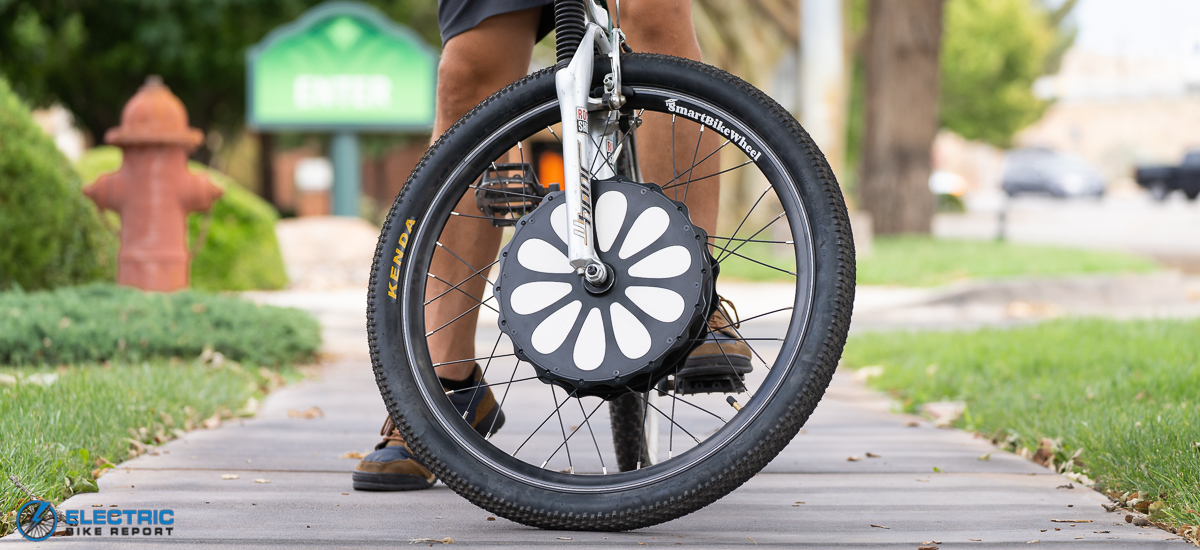
E-bike conversion kits are a solution that allow you to add a motor, battery and electric controls to a non-electric bike to make it into an e-bike. Chosen with care and installed correctly, the resulting e-bike lets you ride with electric assist just like a ‘regular’ e-bike. With the range of readymade e-bike designs larger than ever, kits have some competition from off-the-peg, ready to pedal e-bikes. However, they still offer positive advantages as well as some drawbacks which are considered first-off.
E-Bike Conversion Kit Pros
You Like Your Current Bike: You might want a bit of power assistance on a cherished non-electric machine that fits you like a glove.
Unique Bikes: The type of bikes you prefer may not be available in electric versions (folders and recumbents are cases in point, though more are appearing on the market, especially e-folders). Electric bike conversion kits can be useful at the ends of the power envelope less catered for by off the peg e-bikes, that is to say moderately powered but very ‘bikelike’ machines or at the other end of the scale, power hungry beasts.
Swapping: E-bike conversion kits can be swapped between bikes, giving the option of trying electric-assist on several different machines. Similarly, if the kit is a very easy to remove front hub wheel kit (for example as is the case with Leeds, Cytronex,Swytch etc.), you can use your bike unassisted at any time by simply swapping the wheel back to the original and leaving the battery off (the bike then weighs just a few hundred grams more than before). With such systems you can also choose at any time to electrify more than one bike and fully utilize your battery, just by swapping it between bikes.
Greener: If you already have a bike you want to make electric, e-bike conversion kits are generally a ‘greener’ option than a brand new e-bike, for the obvious reason they don’t need another brand new bike to be manufactured to replace the one you have bought!
Tinker or Do Something Totally Different: Those who love fiddling with bikes may be intrigued by the endless permutations of motor kits and bikes – the performance of a kit will be affected by the bike it is fitted to. Hub motors are usually geared for a specific wheel size to ensure they stay within the speed limit set for electric bikes in the territory in which they are sold. However, to take one example of how you can play with the design characteristics of motors and bikes, if you fit a hub geared for a larger wheel into a smaller one it will give excellent pulling power at low speeds, producing an excellent hill-climber or load-hauler.
You even have the chance to design an e-bike radically different to anything any mainstream manufacturer offers. To give one example, Canada’s Grin Technologies have a range of solar panels and associated devices that allow for solar charging of your e-bike conversion kits bike as you ride along.
Great Value: E-bike conversion kits can be great value for money. If you have a ‘recipient’ bike languishing in the shed or have picked up a decent quality steed at a good price, it can be converted quite cheaply when compared to the cost of a new e-bike of similar quality. Do note the Fitter’s Responsibilities section below about the quality of the recipient bike you might want to fit a kit to.
Lightweight: Kits also make it possible to put together an incredibly lightweight electric bike – a total weight of 22 pounds or 10kg is actually possible, and if money really is no object even lighter! There are an increasing number of off-the-peg lightweight e-bikes available now however, though these are generally mid to high priced e-bikes, so e-bike conversion kits can still be an economic way to a lightweight e-bike. E-bike conversion kits that add a little over 3kg to the weight of a non electric bike are now widely available and there are even lighter options out there, though these tend to be rather light on the amount of power assist you get.
IMPORTANT NOTE: Kits containing illegal motors and control units are in the market, and many people are using them on the road, either innocently or otherwise. A fast and/or powerful kit can be a lot of fun, but bear in mind that once you exceed the parameters set in the regulations, you are on your own. In most territories, your bicycle will be treated as a moped in the eyes of the law, and subject to the much more stringent penalties that come with motorcycle use. If you are found responsible for injuring someone, you will be in very serious trouble. The electric bike legislation is a safety net for your protection, and you leave it at your own risk.
E-Bike Conversion Kit Cons
May Be Complicated: Some e-bike conversion kits are easier to fit than others, but most require at least basic bike DIY skills. However, the simplest, such as the Leeds system and the rather more sophisticated Cytronex system really only require you to install a wheel, mount the battery on your bike and attach a basic cable run, so don’t really require any specialist bike knowledge. Even then you might need to do some unexpected mods in supposedly ‘universal’ fit systems, for example filing out fork dropouts that are a little too narrow.
All-In-One Wheels like the Zehus and Smart Wheel can offer an easy install option, though they have their performance limitations.
Somewhat Limited: If you want a mid-drive system your choice is very limited and they are more difficult to fit than most hub motor systems.
Aesthetics: Often kits will not look as neat as off-the-peg electric bikes. External cable runs secured with cable ties are the order of the day, whilst most complete electric bikes nowadays come with cables hidden within the frame.
Having said that, the smallest and neatest e-bike conversion kits out there do integrate very well onto the bike and it may be hard to tell it’s an e-bike.
May Not Fit: Not all e-bike conversion kits will fit all bikes. Attention needs to be paid to getting the correct speed of motor for your size of wheel (although most hub motors come ready spoked into the correct size of wheel) and finding a suitable battery mounting point amongst many other factors. Front hub motor e-bike conversion kits are generally easier to fit than rear hub e-bike conversion kits simply because they don’t involve interfering with the gear system. Some e-bike conversion kits must be fitted by a qualified fitter whilst with others it is only recommended unless you are a very competent bike mechanic.
Quality: As with complete electric bikes, quality varies from kit to kit: Heinzmann for example stand out in this regard because of its high quality connectors and cabling, giving you the confidence to produce smooth tight cable runs, minimising the kit’s visual impact.
E-Bike Conversion Kits: Which Kit is for Me and How do I Fit It?
Geared or direct drive conversion kit system?
The vast majority of e-bike conversion kits are geared, whereby the motor power needs to be geared down via a set of compact gears on its way to the hub shell. They are fixed gear, usually being geared to achieve a maximum speed of 15.5mph or 20mph (depending whether you are buying a European or US spec kit). However, they may be geared to give the maximum amount of hill climbing ability and so the top assisted speed of the motor may (rarely) be less than the actual legal power assist limit.
Direct drive motors do not ‘gear down’ onto the hub shell, so in reality the hub is the motor itself. Whilst this might sound ideally simple, motors generally like to spin a lot faster than the 200-400 rpm bikes wheels typically spin at and the direct drive design also tends to lack the torque of geared motors, so crucial for effective and efficient hill climbing abilities. To compensate for these inherent characteristics direct drive motors are often made with a wider diameter than geared motors to help them gain torque and so any weight saving gained by the lack of gears tends to be lost by their larger size.
That said they have definite advantages that might be important to you such as near silent running (though some geared motors are now extremely quiet) and an ability to brake ‘regeneratively’ using the motor. The latter however, is more a ‘comfort’ feature, allowing you to brake on long sustained descents without having to keep a hand on the brake lever all the time, rather than a feature that puts a meaningful amount of power back into the battery.
Most e-bike conversion kits range from around 7 pounds or 3.2kg for the Cytronex with the Nano system in a similar range all the way up to 20 pounds or 9kg plus for a beefy motor with extra large battery. Very heavy kits could also potentially push the load on the bike (with the rider and luggage) over the recommended limit for that bike. There are some ultra light friction drive kits around though you shouldn’t expect too much from the amount of power such sub 4.5lb / 2kg systems can deliver.
Just as important is the weight distribution of the kit, as too much weight in the wrong areas can affect the handling of the bike. This usually means careful attention to where the battery sits – a heavy battery attached to the handlebars is inadvisable as this can badly affect bike handling and even the common approach of integrating it into the rear rack can noticeably affect handling.
Ideally the battery should be placed as low down and as centrally on the bike as possible, so you should consider if mounting the battery on the downtube of the recipient bike is possible. If that is not possible a bikepacking style frame bag attaching along the top tube is not a bad compromise as long as the battery isn’t too heavy.
This can vary a lot between e-bike conversion kits and from bike to bike but below is a non-comprehensive list of things you should consider. Please check with the company that you are purchasing a kit from for their specific fit requirements.
E-Bike Conversion Kits: Front Hub Motors
Front hub motors are by far the easiest design of kit to install posing the fewest potential compatibility issues with the recipient bike.
There are several considerations when fitting a front hub electric bike kit:
– Is there enough space between the forks for it? If it’s narrower than the fork dropouts packing washers can be usually be used to make it fit. If the motor is wider than the dropouts it may not be possible to fit at all and if it is you are looking at fork-spreading which might work OK but will likely void any warranty on the forks and can be dangerous if done wrongly or done too much on the wrong fork design; in other words this is a ‘last resort’ solution to be wary of. It the slotted fork dropout itself is narrow you may need to file it out – but we are only talking small amounts here as any more and you may weaken the fork.
The design of the front forks is also important. Their profile should allow the motor to spin freely in the hub with some clearance. Cytronex actually produce a motor template you can use to check your forks for compatibility against their kit.
– The width of the front fork dropouts should allow the axle shoulders to slide in without any significant sideways movement and there should be sufficient depth in the dropouts for the important non-turn (anti-torque) washers to locate snugly within them.
– Is there space for the battery to fit where it should? Again Cytronex produce a template that allows you to determine this for their own unique bottle battery design.
E-Bike Conversion Kits: Rear Hub Motors
– If fitting a rear hub motor is there enough space between the dropouts? For single speeds the chain line must also not be too far out of line and derailleur gearing also needs a compatible sprocket on the motor.
– Also consider if a rear hub motor will give you the gears you want. You may have to change hub gears for a derailleur system. Does the rear hub allow either freewheel or freehub (cassette) gearing? If so it’s important to know which as the former allows a smaller range of gears and latter can accommodate more modern wide range rear derailleur gear systems.
E-Bike Conversion Kits: Mid-drive Motors
– Many mid-drive kits need the correct width of bottom bracket and the correct threading pattern. The more recent your bike the more likely it is to have a newer non-compatible design of bottom bracket (especially true of bikes that are ten years old or less). Mid-drives are the system that poses most compatibility issues and need the most expertise to fit.
Check out this advice from Empowered to see some of the BB issues with one of the commonest mid-drive kits out there from Bafang.
– How do any anti-torque brackets or locking devices fit onto the bike and is your frame compatible with them?
E-Bike Conversion Kits: All-In-One Wheels
These are generally front or rear wheel systems and they have similar fit issues as discussed above. Here is a guide to all-in-one wheels.
The Wiring Run
Critically you want the wiring runs from motor to battery and other components of the system to be long enough, so again this is part of any pre-purchasing enquiries to the potential supplier.
On some economical kits the controller comes as a separate component and will need to be housed somewhere on the bike, adding to the complexity of the wiring runs and meaning more exposed wires and connections that could get damaged and fail.
The more sophisticated systems tend to house the controller within the battery casing.
As an extra safety system some systems require you to replace your brake levers with ones that cut motor power when they are activated. Bear in mind these also add an extra wiring run from the brake levers to the controller.
Some systems do not require these; for example the Heinzmann direct drive system relies on an accurate torque sensor so power cuts out the instant you stop pedalling, whilst the unique Cytronex sensor also enables the motor to be stopped in much less distance than the European EN standard requires (the standard states that you must fit brake sensors if you cannot stop the motor within 2m of ceasing pedalling on a road surface).
Is An E-bike Conversion Kit Road Legal?
Sounds obvious, but kits are one area where it’s possible to build an e-bike that doesn’t conform to the definition of a road legal machine. It’s also quite possible to unwittingly fit a kit that produces an illegal e-bike.
In the US state law is usually a key determining factor on the legality of e-bikes and indeed e-bike conversion kits. More and more states are adopting the three class model for e-bikes, so we’ll stick with that model here for the purposes of determining what a ‘typical’ buyer should look out for to ensure their kit will produce a road legal e-bike. (For an overview of state legislation see here and for legislation in particular states see here).
The three class model stipulates ‘legal’ e-bikes (ie e-bikes are treated as regular bicycles regarding use on roads and bike paths and lanes) fall into the first two classes of the three. In effect this means assisted speed of 20mph when the kit is fitted to the bike it is intended for and a power output limit of 750W. For the purposes of road / bike lane use either pedelec (where you need to pedal for the power to kick in) or throttle only kits fall into the first two categories (use on dirt trails is more complicated again and you need to look at the law pertaining to that particular trail). The third class is pedelec only up to 28 mph max and 750 watts and they are restricted from some bike & pedestrian routes. There are not many kits that offer the Class 3 options.
European Union countries and the UK follow the 15.5 mph max assist / 250W power limit prescriptions, so the situation is somewhat simpler than in the US in this basic respect. However, EU rules dictate that the pedals of your e-bike must be turning for the power to kick in. This means an electronic sensing mechanism of some kind must be fitted – typically either a bottom bracket housed torque sensor (giving the best ride experience but adding a lot of cost and complexity and so quite rare in practice), a motion sensor (usually easily fitted around the bottom bracket but giving a rather crude riding experience) or a proprietary sensing system such as that designed by Cytronex for their C1 kits.
Also be aware of your own legal responsibility to see that the kit is fitted properly to a suitable bike (see The Fitter’s Responsibilities section below).
Ensure the E-bike Bike Kit Can’t Be Easily ‘Modified’
Not only are you risking getting into trouble with the law (especially if you end up having an accident and your bike comes under close scrutiny from the authorities) but a hub motor geared for a faster speed (as such motors will be) and restricted to a lower speed will not be running within its most efficient range, negatively affecting performance and battery range.
Electric Bike Kit Manufacturer’s Track Record
How long have they been in business? What do independent, third party reviews say about them? How comprehensive is the information they provide, both pre and post purchase?
The manufacturer should have a good track record of their product being fitted to a wide range of bikes and give comprehensive advice on suitability and compatibility of your bike before purchase plus comprehensive fitting instructions after purchase.
You should also check out what warranty the supplier is offering; naturally the longer the better. Perhaps an equally important sign is a company that has been around for several years and has accumulated a long history of satisfied customers and positive feedback.
The Fitter’s Responsibilities
You, as the end user of an electric bike kit, are ultimately responsible for ensuring the bike you supply for fitting the kit to is up to the job and whoever fits the kit should also ensure they are competent and have a clear idea of what they are doing and how to do it. The parts of the bike where the kit is being fitted to need special attention to make sure they can stand up to the extra forces being applied to them; this is touched on in the Buying and Fitting tips above.
In the same way the fitter expects comprehensive advice from the supplier, he or she should then observe all advice and warnings on correct installation and use. If you are physically modifying the bike ie drilling into the frame be aware this would invalidate the manufacturer’s warranty.
If you are intending to fit the kit yourself you should be pretty sure you have the capability and equipment. Is it really a job for a specialist? Does it need specialist equipment or tools? Just to repeat the basic generalisation again when considering this question; front hub motors tend to be the easiest to fit (and some are easier than others) followed by rear hub motors then mid-drives.
Some Suggested E-Bike Conversion Kits
Here’s a list of suggested e-bike conversion kits based on our knowledge of the firms involved. They have a track record of reliable service in the provision of electric assist kits.
Lightweight Hub Motor Kits – From around 7-9lbs / 3-4kg
Lightweight e-bike conversion kits are ideal for electrifying bikes when you also want the final weight of your converted bike to be as light as possible. This often applies to folding bikes that people will be lifting up regularly (or maybe a non-folding one they need to carry up steps regularly) but it could also apply if you just want a lightweight e-bike that’s quick and easy to ride once the motor has cut out at the legal assist limit.
Naturally these small kits don’t have the raw motor power of larger ones, though riders can prefer this as it gives them a more ‘bikelike’ ride and also probably means they get more exercise. So if you are quite a sporty rider and want a light e-bike that gives you just a bit of a helping hand up steep hills then a lightweight hub motor electric bike kit is definitely worth thinking about.
To keep weight low you are quite likely to get a small battery with such kits, so range may be at the low end of the spectrum – though some of these small kits are incredibly efficient, and if ridden by fairly fit riders can achieve very impressive figures indeed – for example tests on the Cytronex C1 have shown it to be on a par with some mid-drives with bigger batteries in terms of the range achieved.
Even better news, there are several companies producing small e-bike hub motor kits, mainly from the EU area where the 250W motor power, 15.5mph assist laws suit the smaller size more.
In this section we have classified e-bike hub motor kits weighing less than 4kg as lightweight.
US & UK Availability
Cytronex C1
The work of many years’ development in the UK, Cytronex uses a discreet geared front hub motor and a bottle unit containing batteries, controller and (more recently) Bluetooth functionality. There is little in Cytronex that is not manufactured in the UK, plus a plethora of original design features, including marine-grade stainless steel mounting mechanism for the bottle and a tiny sprocket movement sensor, responsible for delivering power.
At 3.2-3.6kg / circa 7-8lbs (depending on spec) it has to be one of the lightest retrofit options out there.
Though the battery is a modest size it keeps the weight down and the efficiency high, meaning an impressive range from such a relatively small battery. Cytronex currently have 5 patents and their own-designed tech includes the innovative sprocket motion sensor and their own unique design of bottle battery plus the unique new 2-way control, the “Boost Button”. There are EU and US spec kits.
2021 has seen quite a number of improvements that should see the Cytronex kit go from strength to strength. They are now using new lithium cells in the battery packs to give 198Wh, a welcome increase on the previous 180Wh, but still within the limit which allows the product to be transported on a plane. This is another unique Cytronex feature where the two battery packs inside the bottle are each 99Wh, just below the dangerous goods limit.
The new bottle battery units now have Bluetooth – Cytronex say ‘As our main PCB is inside the bottle with the battery, Bluetooth allows the users to monitor charging from their phones, for example. So if you charge up in a cafe whilst stopped for coffee or lunch, you can now see how much charge you have without going to check. Also you get the exact charge level on your phone and can alter the power levels on the go.’
The Boost Button is also new – there are 5 different colours now (for 5 power levels, instead of 3) and now you can move up and down through them by pressing on the left or right of the Boost Button. They have also further improved both the main C1 sensor (making it neater and easier to fit, and also making it universal – previously they had a slightly different mount for hub gear bikes). The Brompton sensor has also been further improved to make it even easier to fit.
Price range: From £1045 as of 2021, and their range of complete Cytronex-powered e-bikes includes most styles of bike including tandems and a Brompton-specific model we have reviewed here.
Swytch
The UK’s Swytch promise a kit to fit virtually any bike with the extra claim that it is one of the easiest kits out there to fit, with three main elements:
- 1. A front hub motor ready laced into 28″, 26″ and 16″ (Brompton) rims in stock and they also offer custom build service for other sizes. The only non-compatible wheels will be those with thru-axles which tend to appear on high end mountain bikes and so are much less likely to have such a kit fitted.
- 2. Battery options are 180Wh (‘Eco’ kit) and 252Wh (‘Pro’ kit) – both are relatively small capacity batteries as e-bikes go so if you think you can manage the extra weight of the larger pack on your handlebars that is probably the best option for most riders.
- 3. The universal pedal sensor (which has just gone through a redesign) can be easily configured to fit around the pedal crank on the opposite side to the chainwheel. It is essentially a circle of twelve magnets that communicate with a separate sensor fixed to the bike frame via a small sticky pad. Sensor and magnet wheel can be aligned using small Allen-head bolts so that they line up accurately – the idea being to get the magnets to pass as close to the sensor as possible without touching it.
I’ve tested the heavier 2.1kg (252Wh capacity) ‘Pro’ battery option and found that particular kit option added 4.45kg / 9.8lbs to the weight of the bike.
Vekkit
A relative newcomer, Polish firm Vekkit looks a very minimalist kit with a claimed install time of around 10 minutes. It comprises a front wheel with a motor, bag with a battery, wireless pedal sensor and wireless handlebar remote.
There are few independent reviews out there so all details are the company’s own; wheels size options from 16” to 29”, total weight added just over 3kg (smallest battery option) and battery option sizes are 180Wh, 187Wh and 360Wh. There are also options from folding bikes like Bromton and Dahon that have very narrow front forks.
From around €730 including shipping to the UK – that includes the smallest battery and no handlebar remote (app control only). They also appear to ship to the US but note the kits are UK/EU spec with 15.5mph assist limit.
US Availability
Xofo MSP16
Xofo are certainly not as well known as the likes of Bafang or Shengyi but they produce this neat little motor with a claimed 1.8kg weight that makes it a true lightweight. The Xofo kits on offer from Canada’s Grin are made specifically for the very narrow front forks on Brompton folding bikes. You can get battery complete systems starting at around US $1000.
Bafang G311
Bafang’s geared front hub motor version has a listed weight of 2.3kg and Grin has ‘ready to roll’ complete kit options or you can build your own system from individual components if you have that level of knowledge.
It is a step up in weight from the likes of Xofo and Cytronex but should offer a little more electrical assistance.
UK Availability
Nano
This small, light geared hub motor from the UK is great for Brompton conversions and similar where you want electric hill climbing ability but don’t want to add too much weight. Nano can also supply kits for Moultons, Dahons and other bikes on request.
The Nano system is based around a brushless 250w, 290rpm, 36v motor built into a Brompton front wheel which connects to a controller via a modified luggage block and luggage frame to enable the system to become live when the Brompton bag, containing the battery, is clicked into place. The Nano system for Bromptons is specifically designed to work so that the Brompton fold is unaffected. There are pedelec only options and pedelec plus throttle (but no twist and go option) as the kit is EU/UK spec with a max assisted speed of 15.5mph.
Recent developments include a slimmer motor which, on most Bromptons, will fit straight into the forks without any adjustment. If an adjustment is required Nano supply the necessary tool and instructions. The motor is under 2kg in weight with an excellent free wheel so you will hardly notice any difference when pedalling without using the motor.
Nano advertise the fact that their option of smaller 4Ah, 36V Bosch powertool batteries means they are one of the few systems that can be taken on a plane. Being Bosch, this option also means the batteries are readily available if you need replacements or spares.
Price range: From £800 for the kit alone for complete kits as of 2021.
Here is a review of the Nano system.
ARCC
From Cambridge in the UK, ARCC (like Nano) use an EU-spec front hub motor and Bosch powertool battery, but their approach is rather more high-tech, featuring a wireless ‘pod’ control unit. They specialise in kits for Brompton and Airnimal Joey folders as well as the classic UK Moulton design. The kit adds just under 4kg to the overall weight of the bike, including the battery. They also come ready fitted to ARCC’s own range of bikes.
The ARCC solid looking aluminium e2-pod is both a wiring nexus and battery mount clamped securely on to the head tube which communicates wirelessly with the handlebar-mounted Bluetooth controller (or an iPhone with appropriate app if preferred). Also feeding into the pod are the cables from a bottom bracket torque sensor and brake lever sensors.
Battery options are 144 or 216Wh Bosch power tool batteries and there is also the option of buying an even larger 324Wh Bosch power tool battery though that is not directly available from ARCC, despite this it’s easily available through DIY outlets and the like.
EBR has tested the Moulton option.
Price range: From £1799
Mid-weight Hub Motor Kits – Circa 9lb – 18lb / 4-8kg
Note that some firms mentioned in the Mid-weight Kits section, like Leeds, offer a fairly light option but this involves very small batteries and most of their offerings are over 4kg in weight. Also note some of the biggest batteried options from some of the brands mentioned are a couple of kg heavier than 6kg, but we have classed the brand as ‘Mid-weight’ as most of their kits are in the 4-6kg range.
US & UK Availability
A well respected Chinese manufacturer of (mainly) hub motors. GRIN produce ready to roll kits using their X1 and X2 motors.
As the motors themselves weigh around 6.5lbs / 3kg, most battery options should produce a kit in the 9-18lb / 4-8kg range
Dilinger US also produce a 17lb / 7.7kg kit that uses a 350W / 20mph Shengyi motor coupled with a 470Wh battery. There is also a UK/EU spec Dilinger kit with the same motor and battery. These kits are priced at US $699 / £699 respectively.
US Availability
Leeds offers a nice range of affordable and easy to fit kits in 250 and 500 watt US spec options with a range of frame and rear rack mounting batteries. Mainly front hub motors but can do rear hubs on request. Disc-brake options. The option of a quick release fitting for the wheel nut is a nice touch too.
Price range: US $549-$1599 for complete kits as of 2021.
Here is a review of their 250 watt and 500 watt systems.
This video shows you the options available on their 250 series kit:
Hill Topper
Hilltopper is an economical front hub option that looks easy to fit. There are three options all based on geared front hub motors with the range topping Summit option being the most powerful with a 48V battery and 480Wh battery and weight of 21lbs / 9.5kg. The lightest option is the 16mph, throttle only , 36V, 194Wh batteries Sprinter option that adds 13lbs / 6kg. The middling Horizon option adds pedelec control to the Sprinter’s throttle only and a bigger 410Wh battery and comes in at 18lbs / 8kg and has a top assisted limit of 20mph.
Price range: US $549-$1099 for complete kits as of 2021.
Here’s an install video for the Sprinter option:
GMAC
A most unusual rear hub motor developed by GRIN of Vancouver along with MAC of China, aiming to combine the efficiency of a geared motor with regenerative power – ideal applications look to be heavy cargo hauling and loaded touring where the extra weight and greater amount of regen will enhance riding (less wear on braking parts) and help put a bit more power back into the battery compared to gearless motors which until now were your only choice if you wanted regenerative power. It is also compatible with modern freehub derailleur gears so you can get a very wide-ranging gear range too. For more technical details check out the Grin video below.
At around 8lbs / 4kg the motor is lighter than most gearless motors too by around a 2lbs / 1kg.
If you want it ready laced into a wheel and with battery then you are likely looking at over US $2000 but that will get you one of the most innovative hubs out there.
GRIN All-Axle Hub Motor
The All Axle motor is a direct-drive front hub designed by Vancouver’s Grin to be universally compatible with all the variety of quick release and thru-axle front fork standards that exist in the bike world these days, as well as many single side mounts for trike and quad vehicles – a claim that, as far as i’m aware, no other motor can make.
UK Availability
Sparticle
UK-based Electric Transport Shop are stalwarts of the industry and so it’s no surprise they have designed and can fit their Sparticle front hub motor system at one of their UK four outlets in Bristol, Cambridge, Oxford and York.
Sparticle say the 250W nominal motor, hand built into a rim in the UK can deliver 700W peak power. Their Standard road legal option has a 370Wh battery and the system uses waterproof gold plated connectors throughout. Throttle operation is standard but there is also a PAS/pedelec option. There are also higher powered non-road legal options with bigger batteries.
The Sparticle Standard kit starts at £700. They also offer trike, cargobike and Brompton versions.
Heavier Hub Motor Kits – Over 13lbs / 8kg
US Availability
E-Bike Kit offers 500W rated kits with front and rear wheel options. They also offer motor only options if you want to source a battery yourself.
All kits are 48V and there are ‘Performance’ (geared motor) and ‘Heavy Duty’ (direct drive) kit options plus a Fat Bike kit.
E-Bike Kit also offers e-trike and e-tandem kits and a range of kits for specific recumbents including Catrike, HP Velotechnik, Trident Stoweway and more.
The lightest total weight for an E-bike kit I could see quoted on their site is 9.5kg / 21lbs – a combination of the fact they look to use fairly large powerful motors and decent size batteries (the kit battery options range from 432Wh to a huge 960Wh).
Price range: From US $1068 for complete kits as of 2021.
It’s also worth highlighting the fact that Grin have a massive range of other kits and options – we have tried to cover the most useful and innovative ones here. They are an extremely competent and knowledgeable Canadian-based team who made their name with the Cycle Analyst handlebar readout which is at the heart of many of their e-bike conversion kits and makes for a programmable style setup to alter various performance aspects.
The Grin website is a superb resource, especially for the more unusual or complicated DIY conversion project – including non-e-bike options like electrifying your wheelbarrow for shifting big weights! Whether it’s a straightforward and economical conversion you want or an electric bike kit for a heavy-duty load hauler, fat bike or recumbent conversion then Grin will likely have it. There’s a nice overview of many (but not all) of Grin’s various options here.
Falco
Falco offers a direct drive system that boasts a wireless handlebar display and, it says, more efficient five-phase motor technology (most hub drives are three phase). The motor itself is listed as weighing 11.5lbs / 5.2kg, so even using their smallest battery option of 500Wh is likely to take total kit weight well over the 13lb / 8kg mark. We reviewed a Falco kit on a longtail cargo bike back in 2014.
Price range: From US $1699 for complete kits as of 2021
UK Availability
Heinzmann
This German manufacturer produces direct drive and geared hub motors at 250 and 500W and a cargo specific model. The standard battery size is 500Wh making for a fairly heavy kit.
Heinzmann are known for their high quality. If you want a reliable powerful system where weight is not a critical factor they are definitely worth considering. Available in the UK from EV Solutions.
Price range: Complete kits from £1420 as of 2021.
Mid-drive Kits
The idea of mid-drive power and torque-sensor efficiency remains alluring in kit form, not least because it also offers even more $-saving potential than fitting a hub drive kit, as most off-the-shelf mid-drive e-bikes cost considerably more than hub motor e-bikes.
However, the range of recipient bikes that a kit is likely to fit is likely to be less as the area of the bike frame they usually have to fit into – known as the bottom bracket – comes in a variety of sizes and standards meaning a near universal fitting mid-drive kit has (as far as I know) never been produced. They also add more weight than the lighter hub motor kits.
Still, there are options out there, and if you are looking for power, efficiency and a very well balanced e-bike conversion they are well worth a look.
US & UK Availability
Bafang Mid-drive BBS Series
The Bafang BBS mid-drive is one of the very few mid-drive kits available out there and comes in various versions, 750W and 1000W versions being common in the US (BBS02 and BBSHD respectively). It is probably the most widely available mid-drive kit on the market by a very wide margin.
You need to be aware that Bafang mid-drive motors only fit bikes with standard JIS-BSA bottom brackets (also known as standard threaded, sealed cartridge, square tapered, English or British). These bottom brackets have inner diameters of approximately 33.5-35mm. Press-fit bottom brackets have larger internal frame diameters and the mid-drives would need adapters.
Tongsheng
You may also see Tongsheng’s TSDZ2 mid-drive – like the Bafang BBS system it hails from China and, according to online reviews, offers roughly similar performance characteristics, though you may find it at a lower price. It offers torque sensing power plus independent throttle control.
There are also 100mm and 120mm side bottom bracket options and a choice of voltages (36, 48 and 52V) as you can see from this Amazon offering through the button below. This means you could fit this motor to a ‘non-standard’ bike such as a fat bike.
UK Availability
Pendix
Most unusual German-designed kit that places a gearless motor in the non-drive side of the cranks. Similar to the Bafang and Tongsheng systems this is also designed for a BSA style bottom bracket frame fitting with a 68mm or 73mm width on the recipient bike and there are options for standard frames and folding ones. Pendix don’t give out detailed fitting instructions as they insist their kit is fitted at a dealer, though it doesn’t look any more complex to fit than other mid-drive kit designs.
It’s a very high quality system but the pedaling characteristics of having a gearless motor drive with you pedalling (no freewheel as on geared crank drives) can take a little getting used to. It has a torque sensor in the bottom bracket component and a speed sensor fits onto the rear wheel.
RRP €1819-€2059 It is available in the UK from Velobrands.
All-in-One Kits (Hub Wheel Systems)
‘All-in-one’ kits are quite rare as they are quite a technical challenge to design and produce; quite simply, just about every component of the electric bike kit has to fit inside a single wheel hub. Whilst that seems hugely attractive in its simplicity, especially from a DIY fitting point of view, it also means the resulting hub will either be very heavy or have a small battery (that’s right – even the battery goes in the hub too!). There may also be performance compromises imposed by the design constraints of getting everything into a single hub.
A couple of kits stand out in this area:
US Availability
Smart Bike Wheel
EBR recently reviewed this kit and were impressed. We found it extremely compact and low cost with a good range of 23-54 miles (depending on PAS setting) from the 313Wh battery
Without the help of external sensors, the hub-internal gyroscope and tachometer do a great job of moderating power from the 250W motor and the app is well designed and connects very quickly with the wheel. You get easy access to settings you normally have to dig for in a typical e-bike display. The only real negative was the fact the tachometer and gyroscope sensing system – whilst very clever – don’t quite give the smooth ride that torque and even cadence sensing systems give (though the company does offer other options).
The kit adds around 20lbs / 9kg and costs from US $495.
UK Availability
Zehus
One of the first – possibly the first – company to design and manufacture an all in one hub. It’s a much smaller affair than the Smart Bike Wheel above and is a rear hub wheel with space for only a single gear, which somewhat limits its applications. It is actually used by many companies who convert their own bikes using the system, though of course the resulting bikes have only one gear. It is popular with folding bike manufacturers and Hummingbird claim to have made the world’s lightest folding e-bike using it.
The Zehus all in one kit adds around 3kg / 6lbs 10oz to the weight of the recipient bike.
Various options are available from Nfixed in the UK from £1390. You may also see the system branded as the Flykly Smartwheel.
Note some all-in-one brands you may find reference to on the internet no longer produce their systems. This includes Superpedestrian, Electron Wheel and Evelo’s Omniwheel. This indicates the technical challenges in producing such a system.
Friction Drives
As the name suggests, friction is used in this design of system to transfer motor power to the front or rear wheel of the bike. The idea is attractive as it promises an easy to fit and remove system that requires minimal modification of the recipient bike.
However, whilst the idea of friction drives has been a long time they tend to come and go quite quickly, hinting at the main inherent weakness of the system – however you apply the friction to the wheel it can be prone to slipping, especially in wet weather. Most also only work with smoother tires.
Still, for dry weather use and for those looking for a lightweight and cheap to buy kit they may have a market, so here we take a brief look at the models we know of that are currently in production.
US Availability
Alizeti
Canadian designed system that mounts over the rear wheel in a pannier style rack. Room for one or two 278Wh batteries in rear rack. From 13lb / 5.8kg claimed weight. From US $499.
OneMotor
Attaches to front or rear wheel and has a claimed weight of 4.5lbs / 2kg. From US $1249
UK Availability
Revos
UK spec system designed to fit over the front or rear wheel, Revos has a claimed weight of around 2-4.5 lbs / 1-2kg including 200Wh battery. RRP £595.
Rubbee
Rubbee clamps onto the seatpost and drives onto the rear wheel. Features include modular battery system and wireless cadence sensor.
From 6.1lbs / 2.8kg
Velospeeder
Velospeeder is a very clever looking German design from the firm behind the super-efficient Velogical rim generator for powering LED lights. Drives onto both sides of the wheel rim that than the usual method of driving onto the tire. Claims a self-correcting anti-slip mechanism.
Adds as little as 3.7lbs / 1.7kg. Prices from €1131.
Other Systems
US Availability
Bimotal Elevate
A totally unique design, the Bimotal Elevate drives onto the disk brake (so of course it’s limited to bikes with disk brake systems). Claims to be removable, light and powerful. It’s not exactly friction drive as you need to add a special toothed disk rotor that the motor drives onto. But it promises all the advantages of a traditional friction drive without the slipping. Claimed weight is around 10lbs / 2.5kg.
Currently available only for preorder with US $100 deposit on a US $1950 price tag.
Are there any essential electric bike conversion kits that we missed? Let us know in the comment section down below.
Reader Interactions
Comments
Trackbacks
-
[…] is an electric bike kit guide to some of the e-bike conversion kits that are out there. Some of these kits are also being […]
-
[…] This post was mentioned on Twitter by Electric Bike Report, Electric Bike Report. Electric Bike Report said: Electric Bike Kit Guide https://goo.gl/fb/z7MoH #ebikes #green […]
-
[…] Electric Bike Kit Guide […]
-
[…] level to which features are integrated, the exact setup and style of accessories, the inclusion of electric assist, and specifics on the frames and components. These are all aspects we are interested in looking at […]
-
[…] For other options, you’ll find a pretty good comparison at ElectricBikeReport. […]
-
[…] Electric Bike Kit Guide […]
-
[…] Electric Bike Kit Guide […]
-
[…] Electric Bike Kit Guide […]
-
[…] Electric Bike Kit Guide […]
-
[…] Electric Bike Kit Guide […]
-
[…] Electric Bike Kit Guide […]
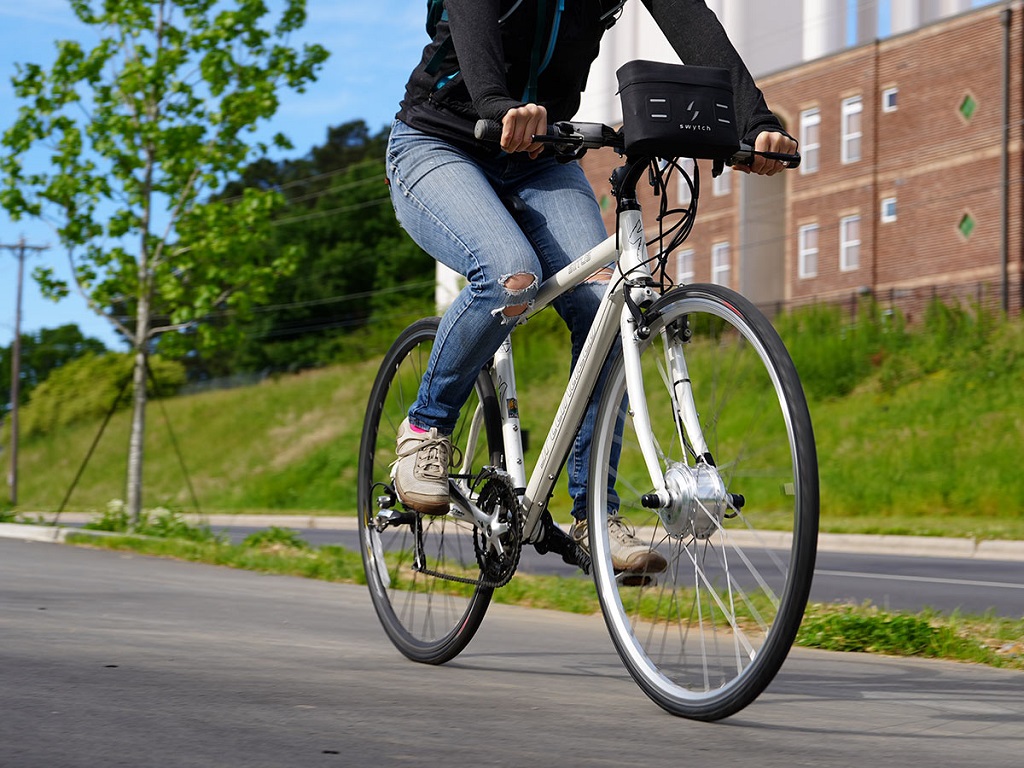
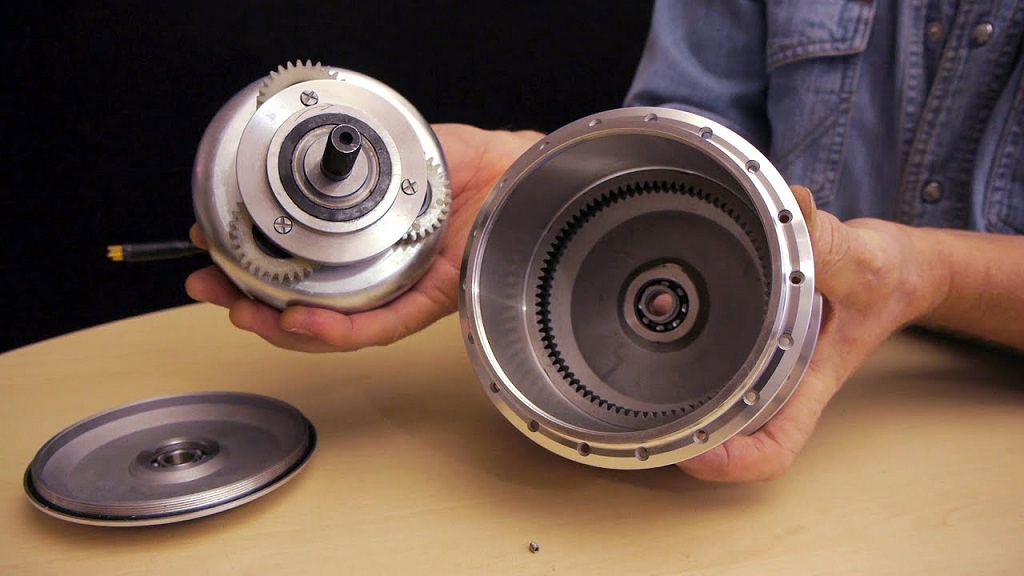
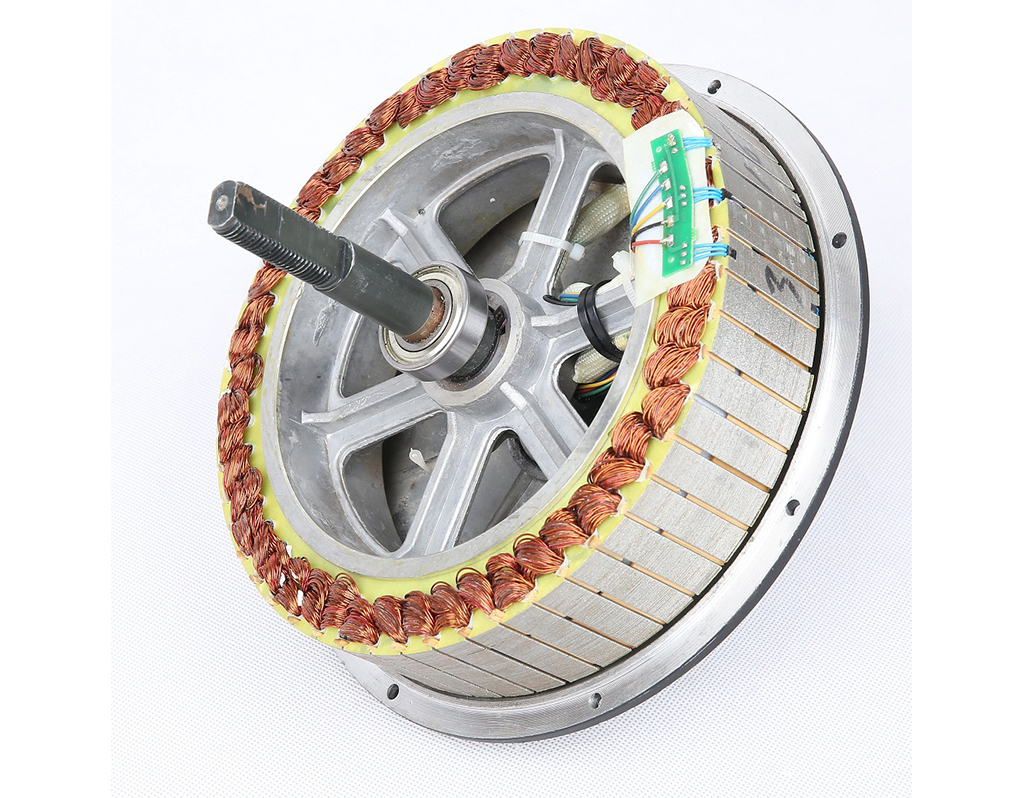
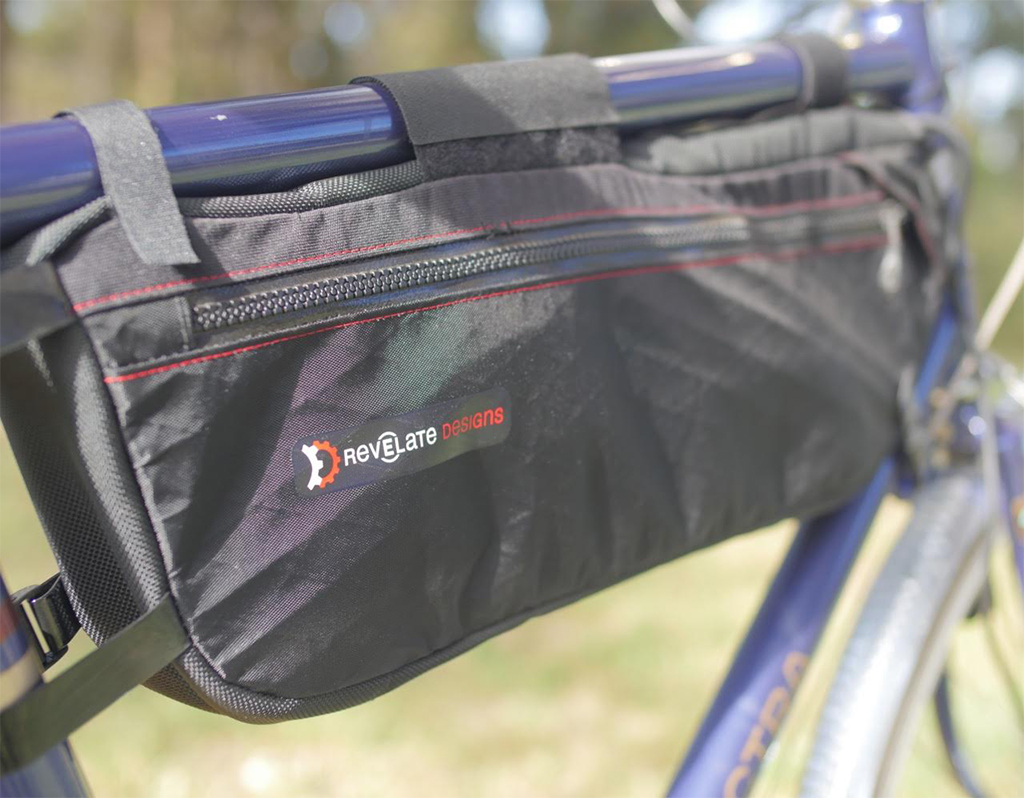
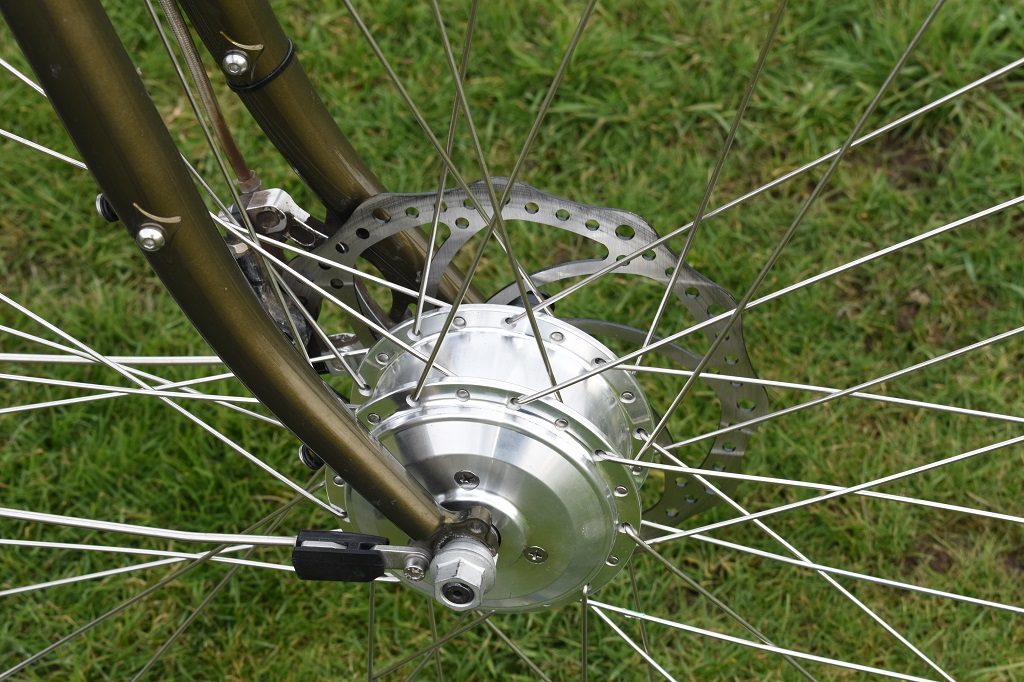
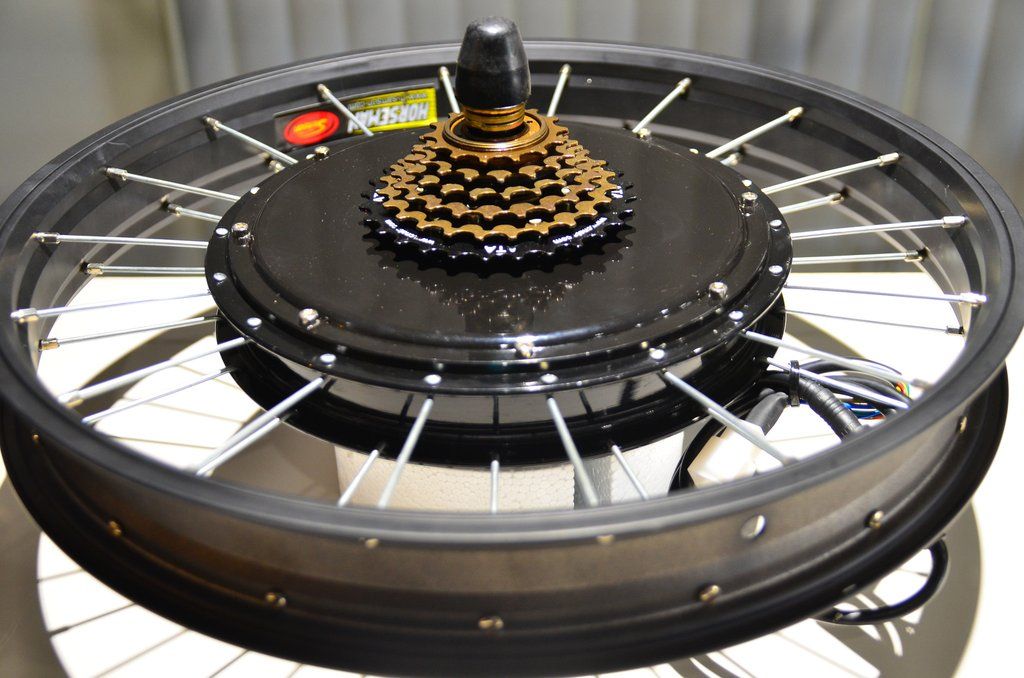
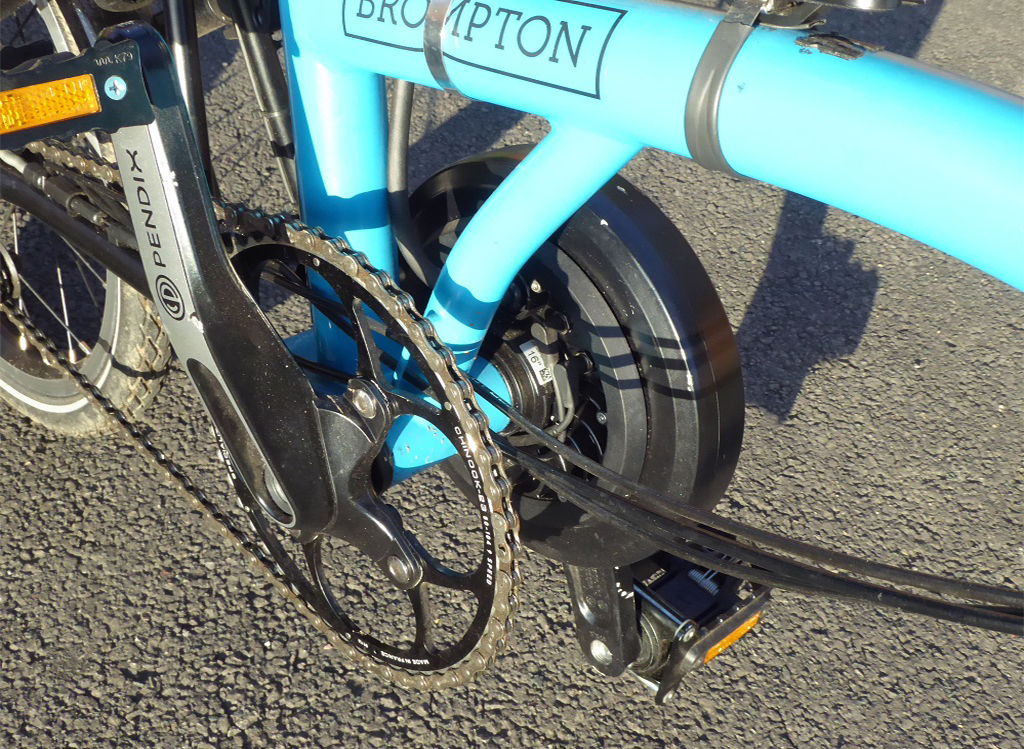
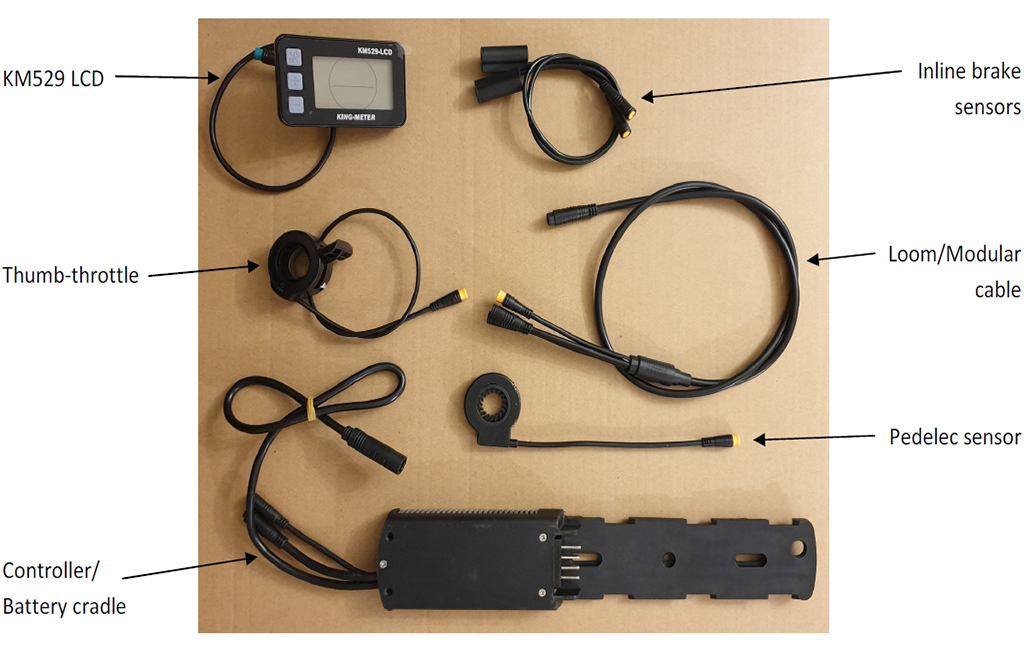
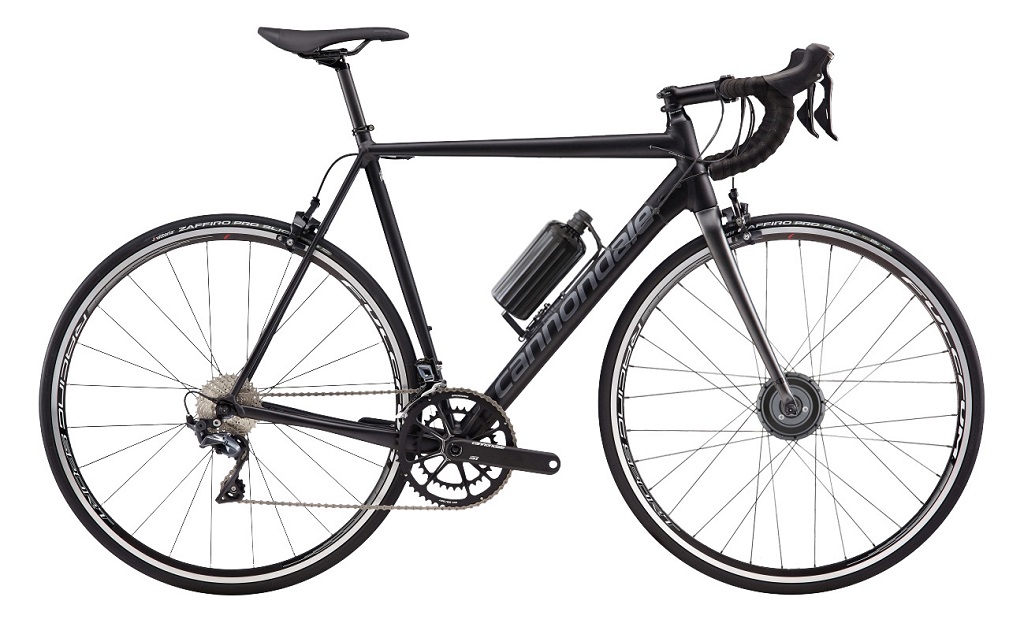
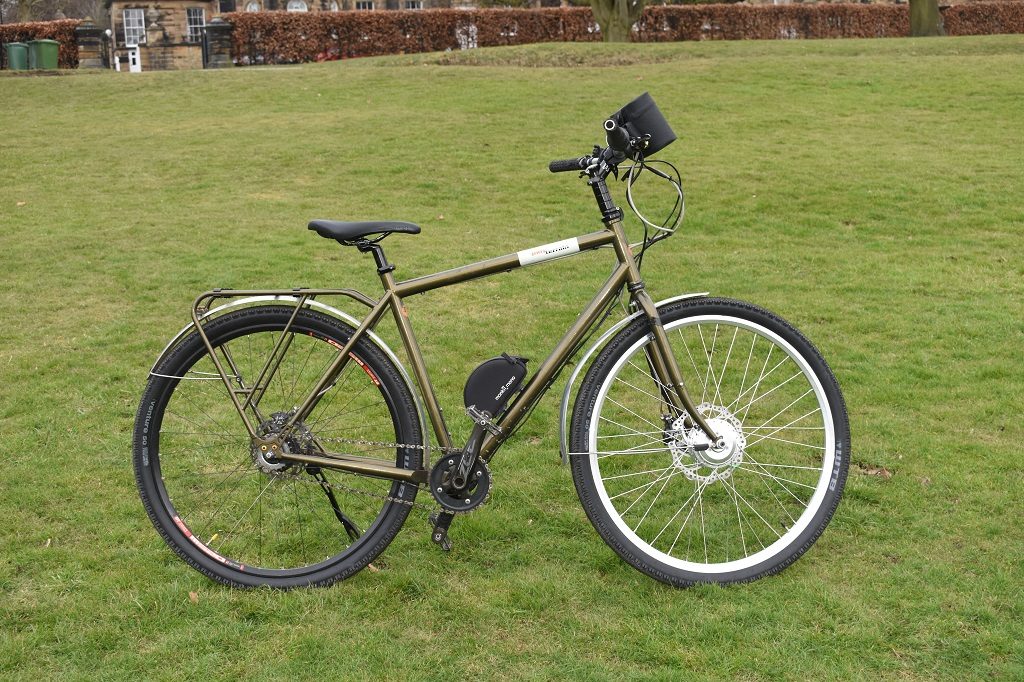
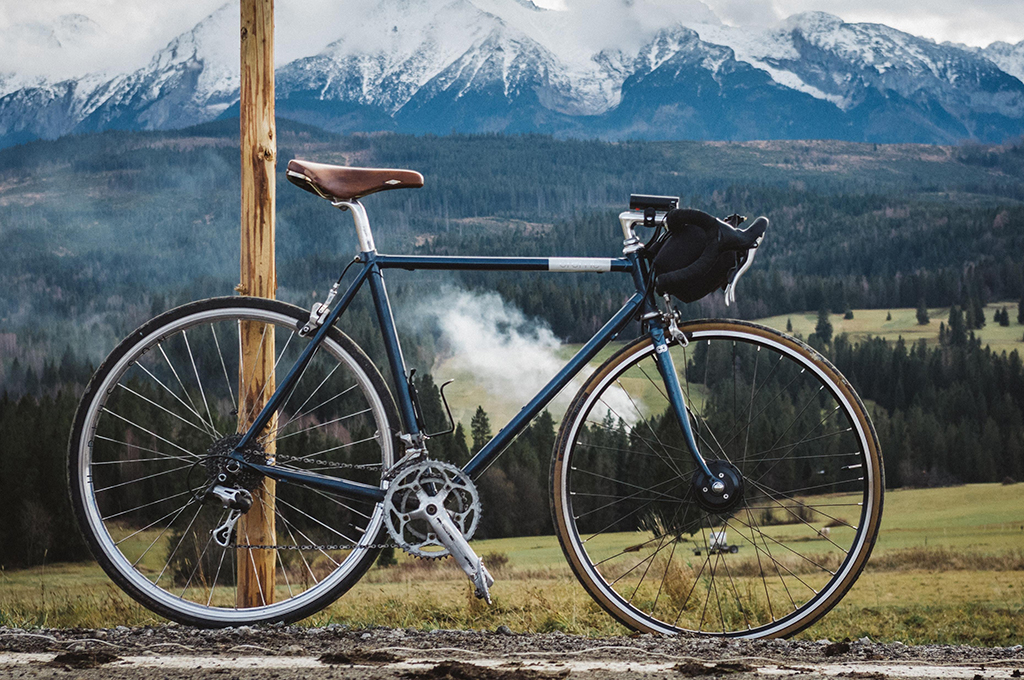
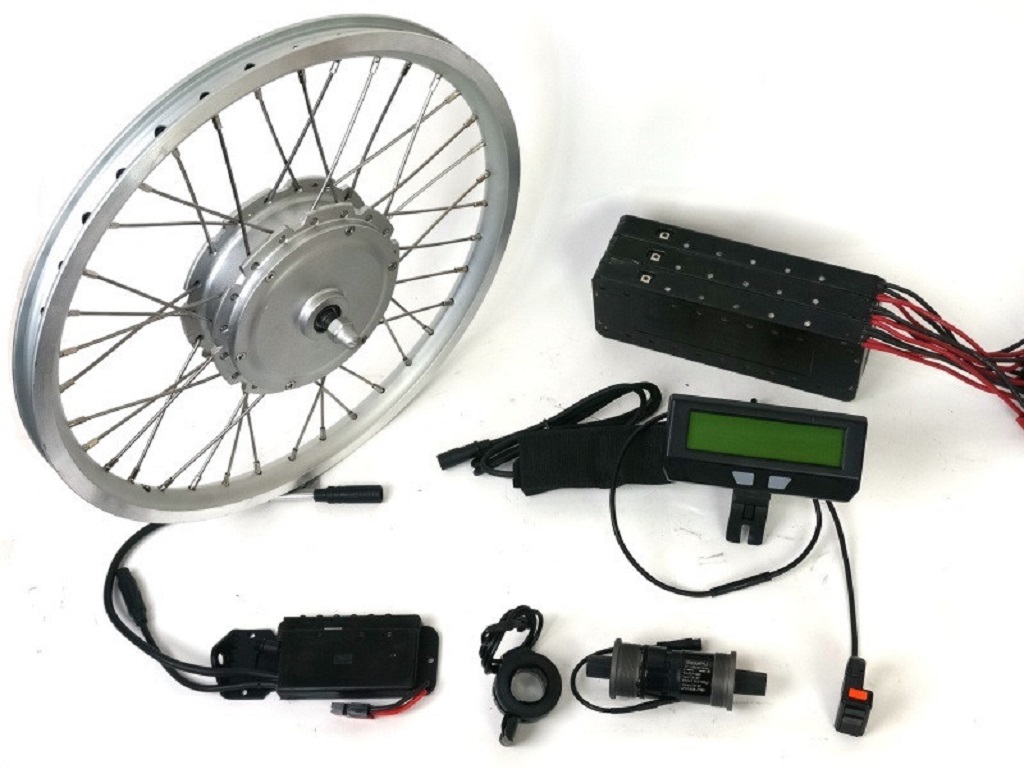

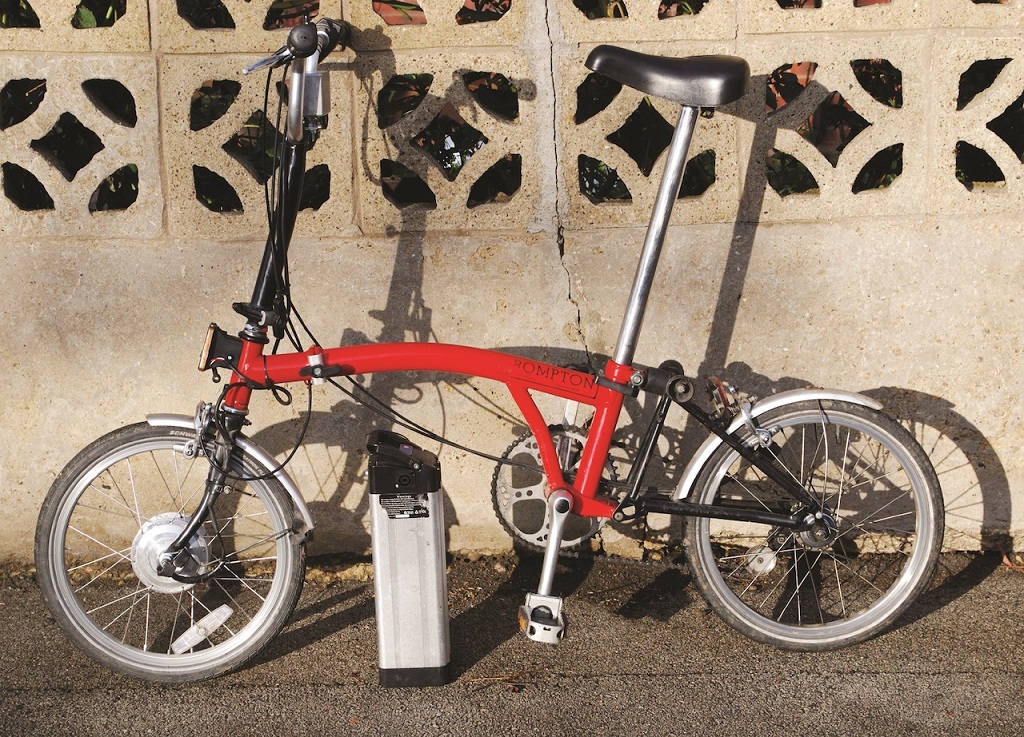
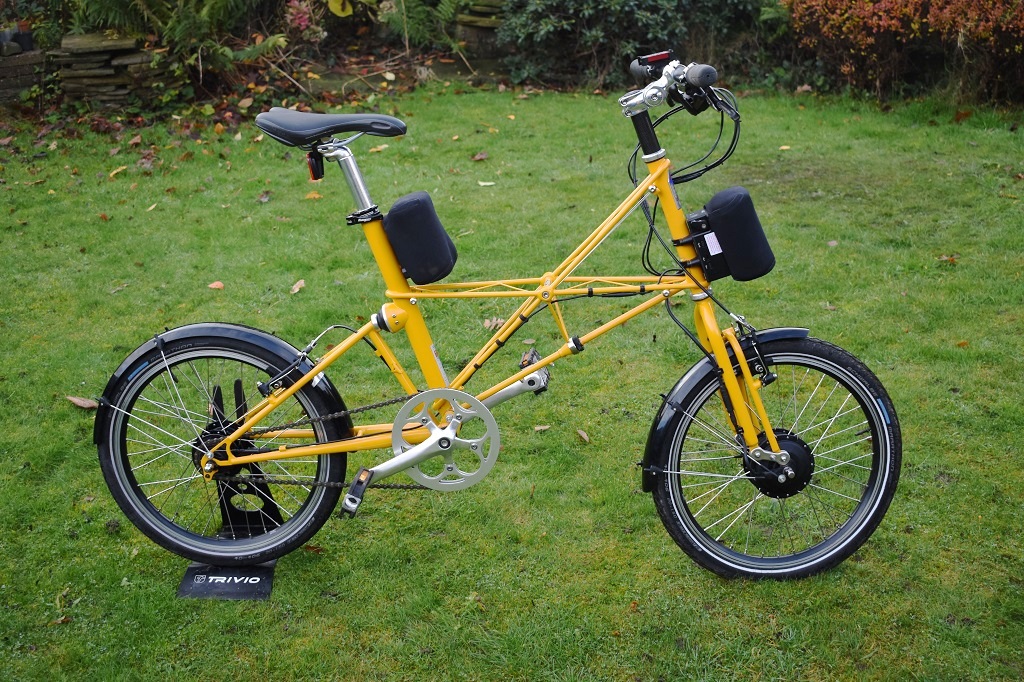
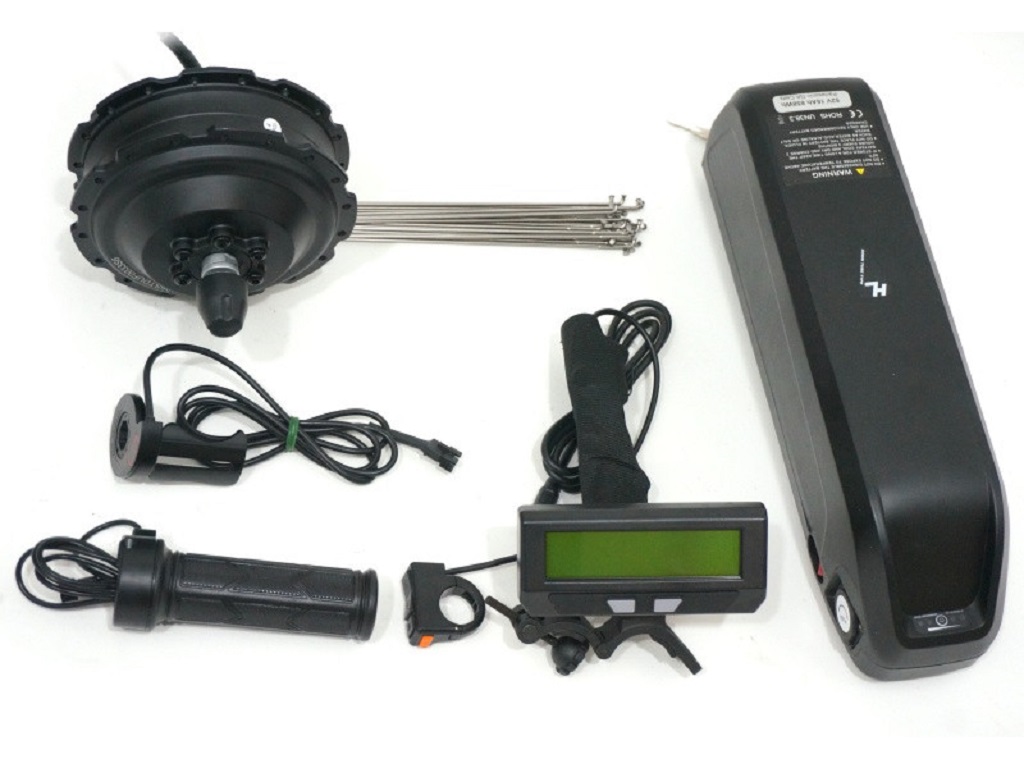
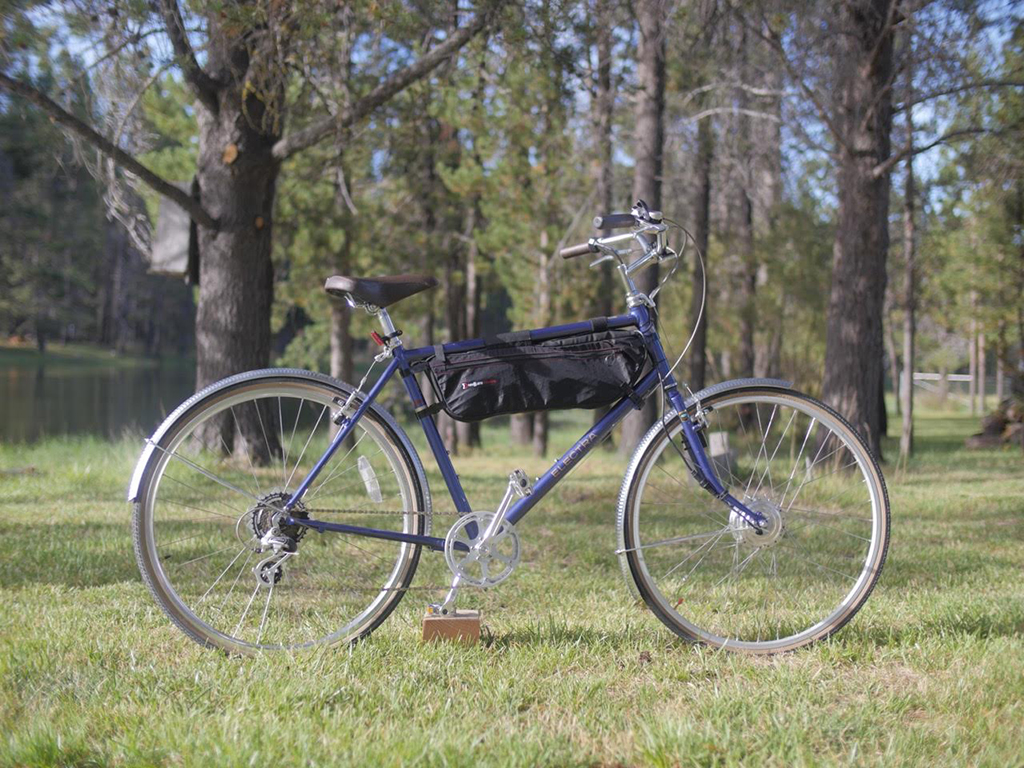
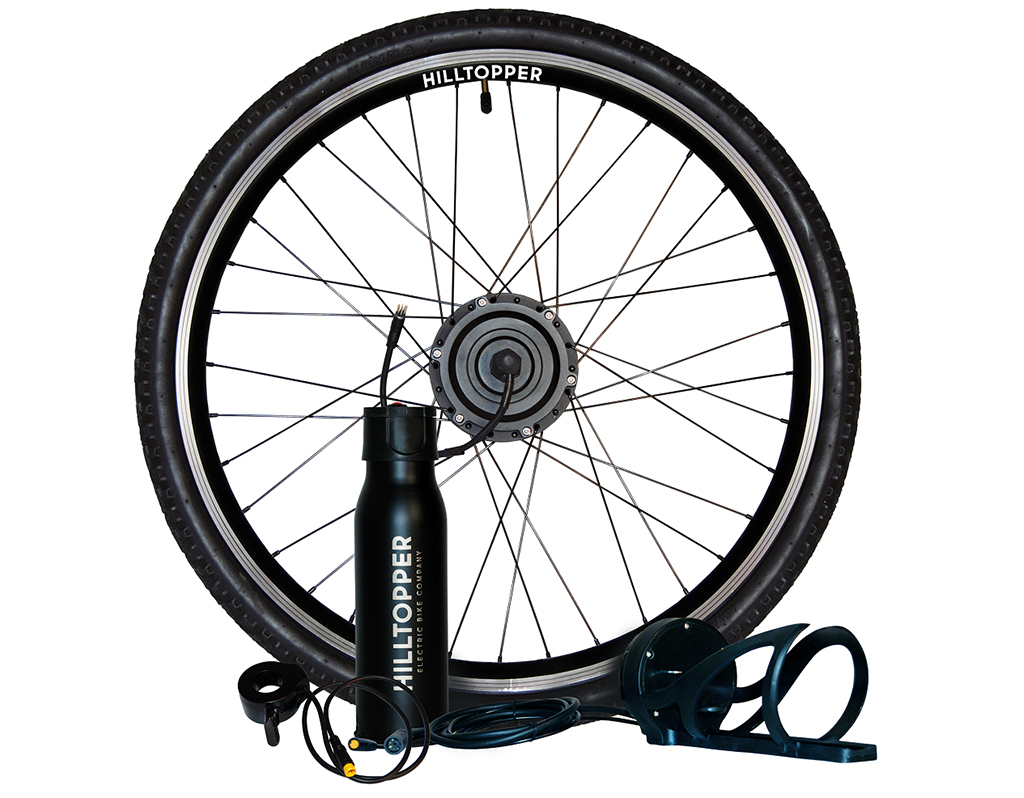

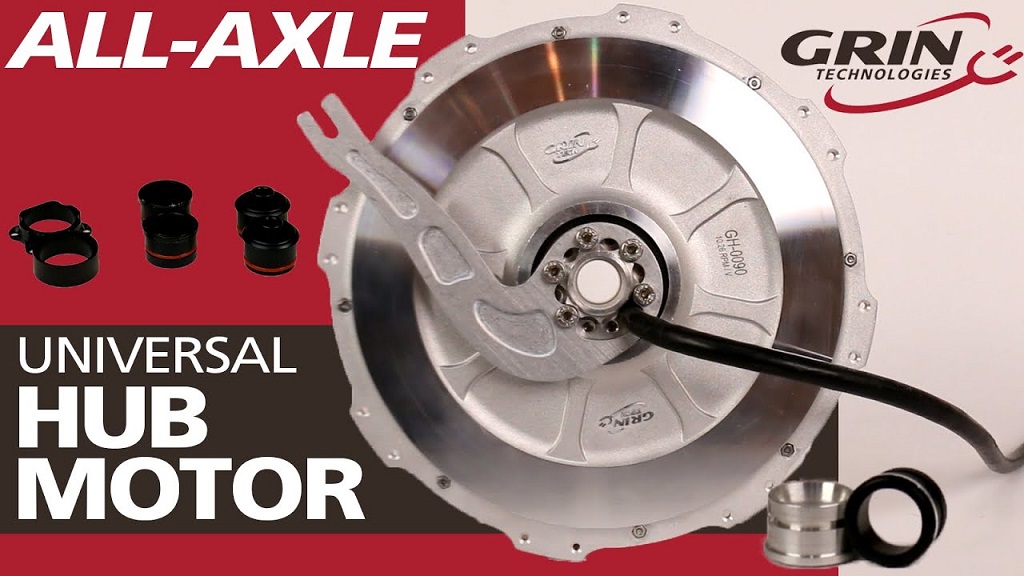
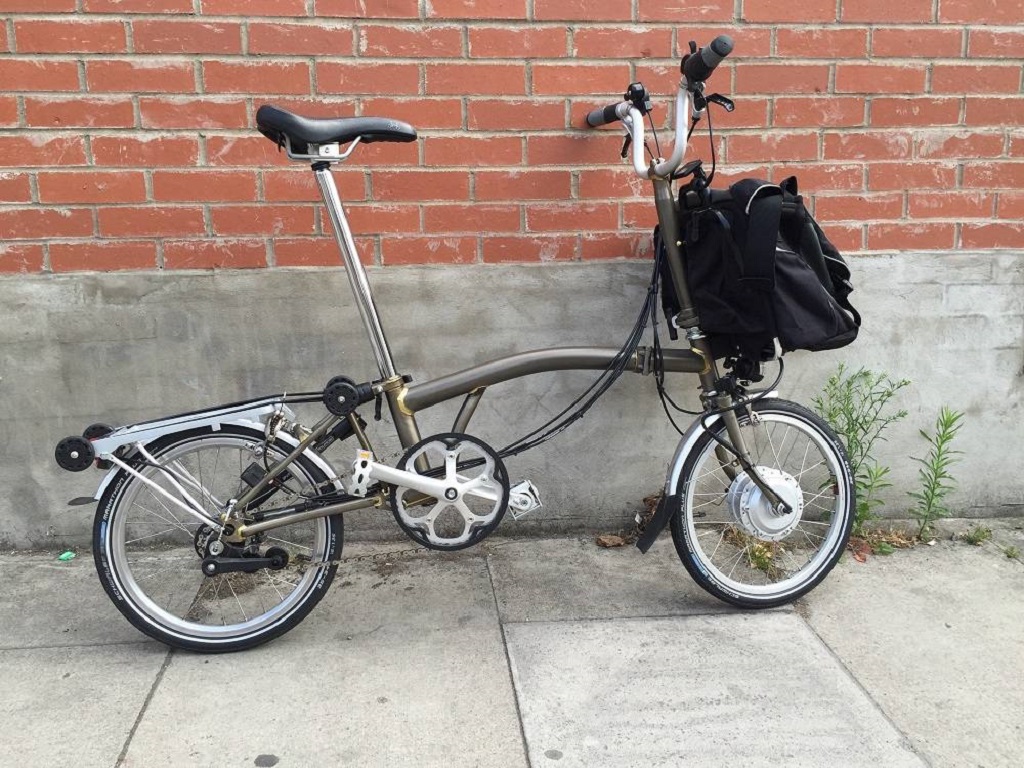
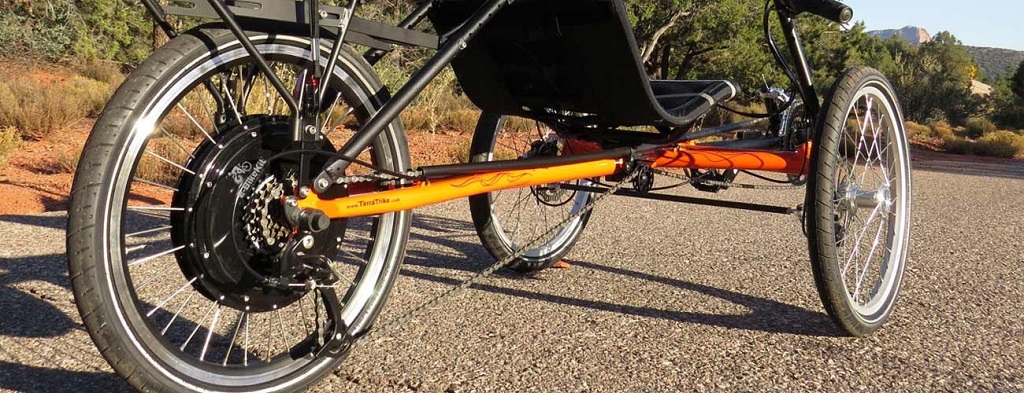
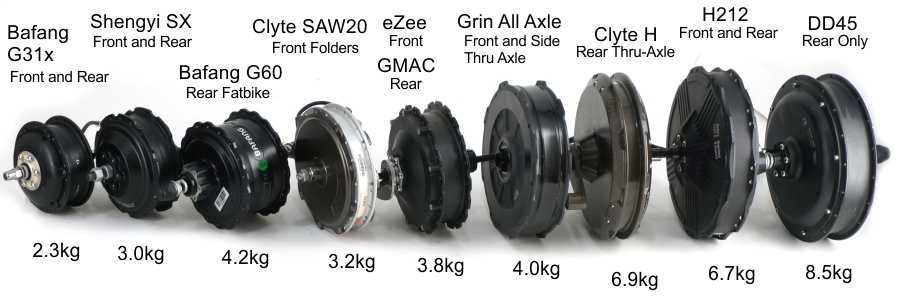
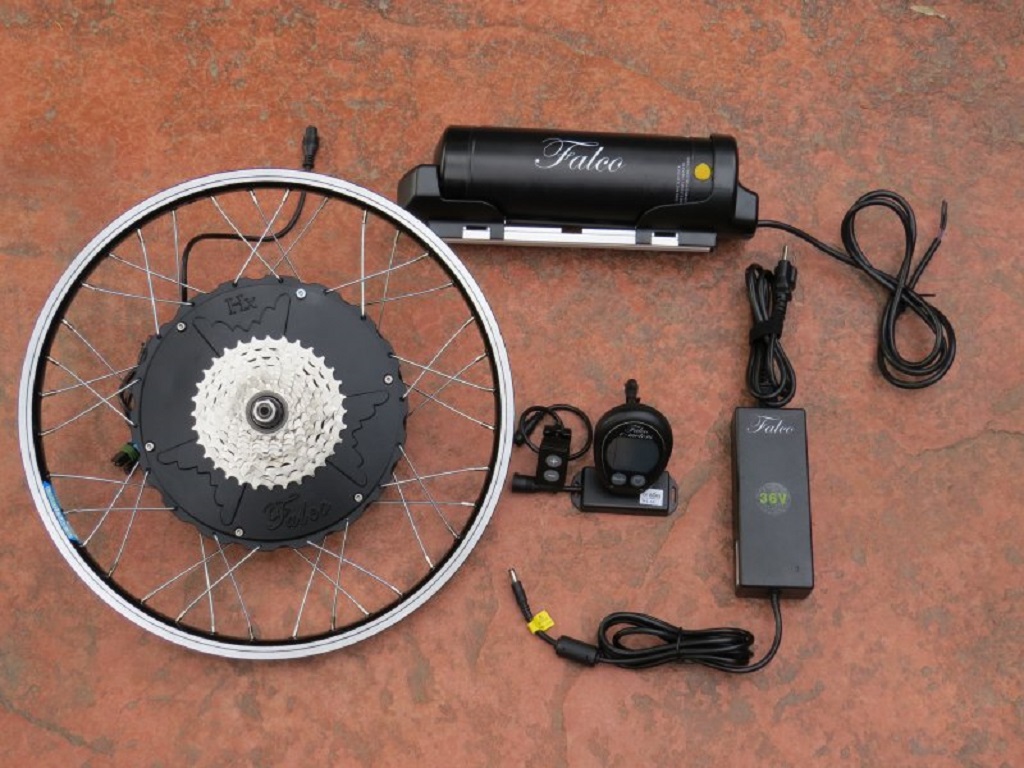
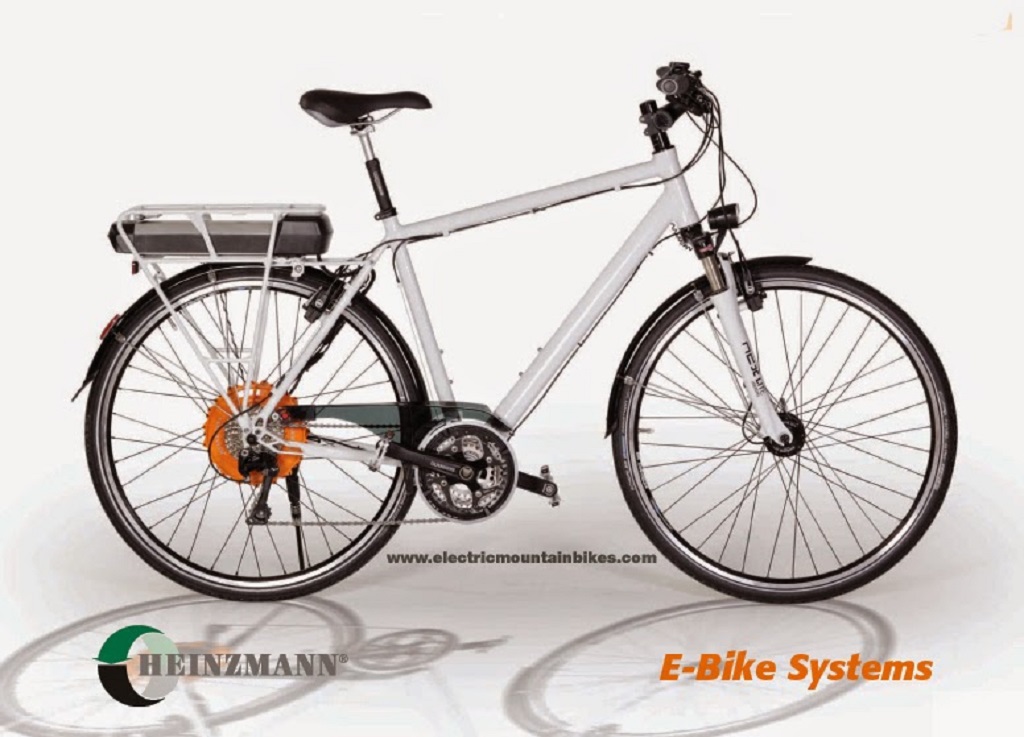
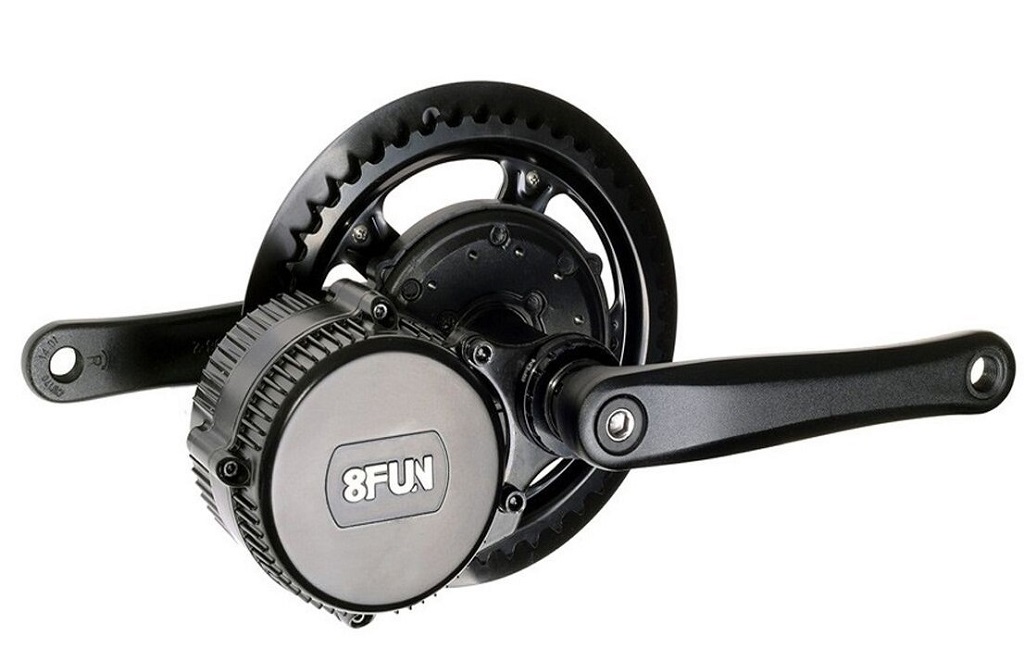

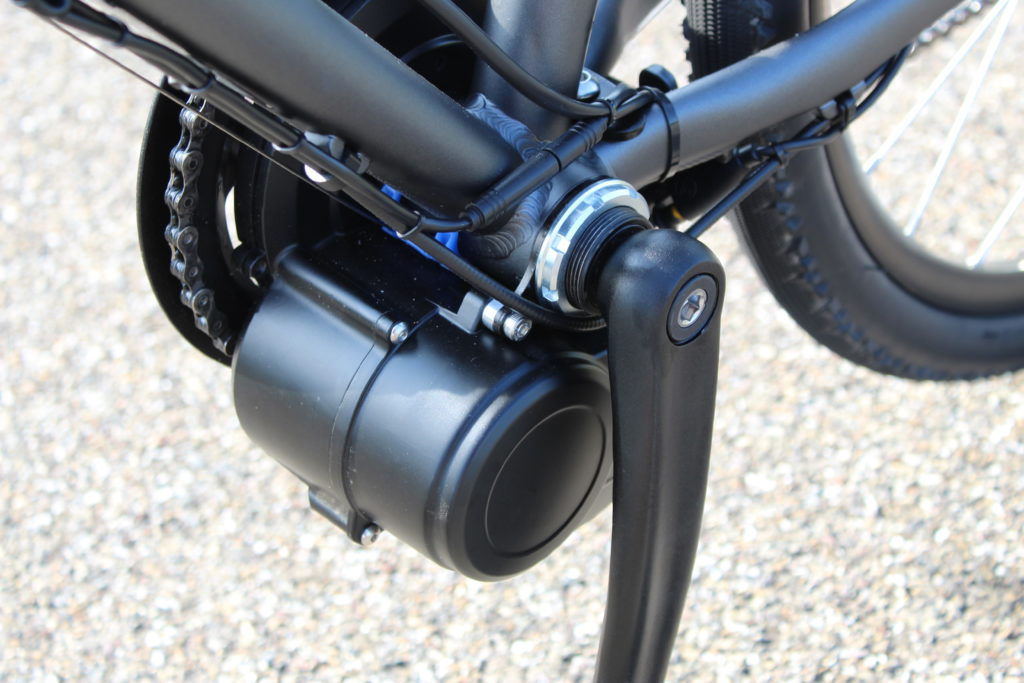
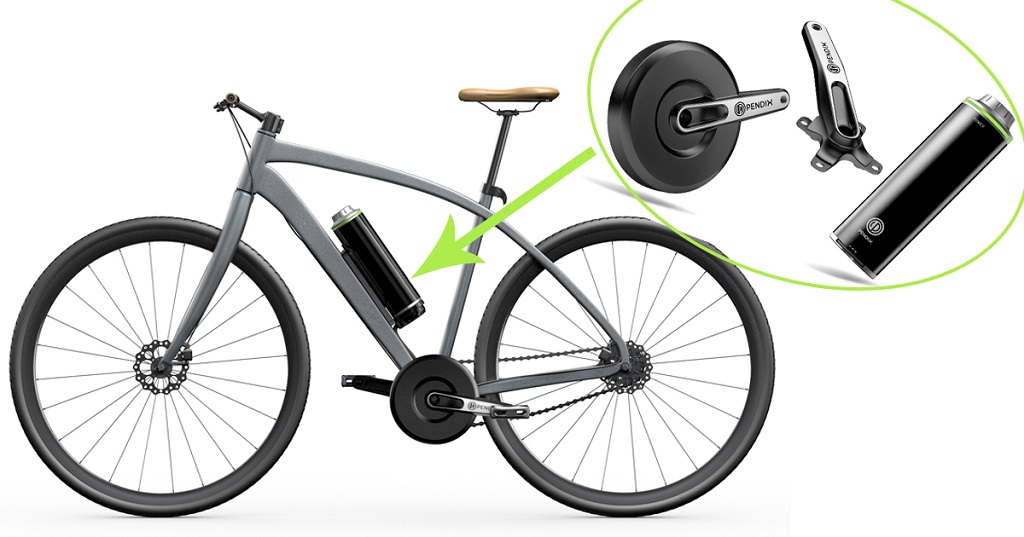
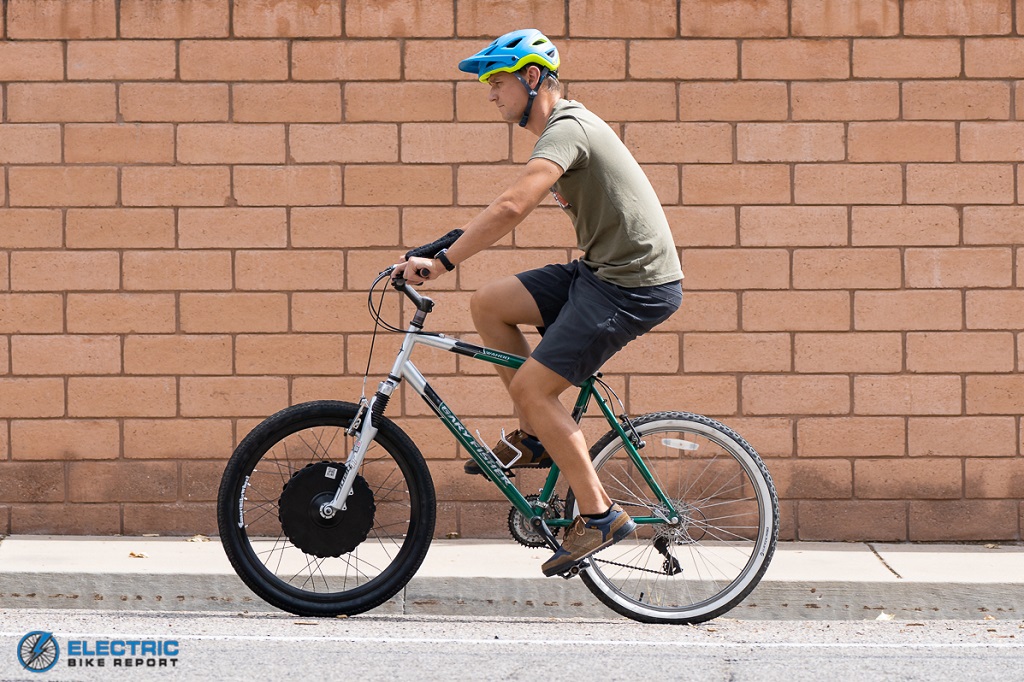
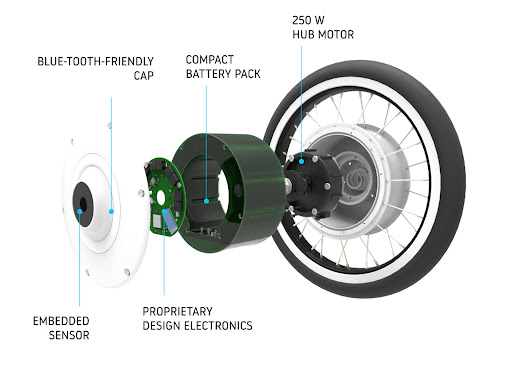
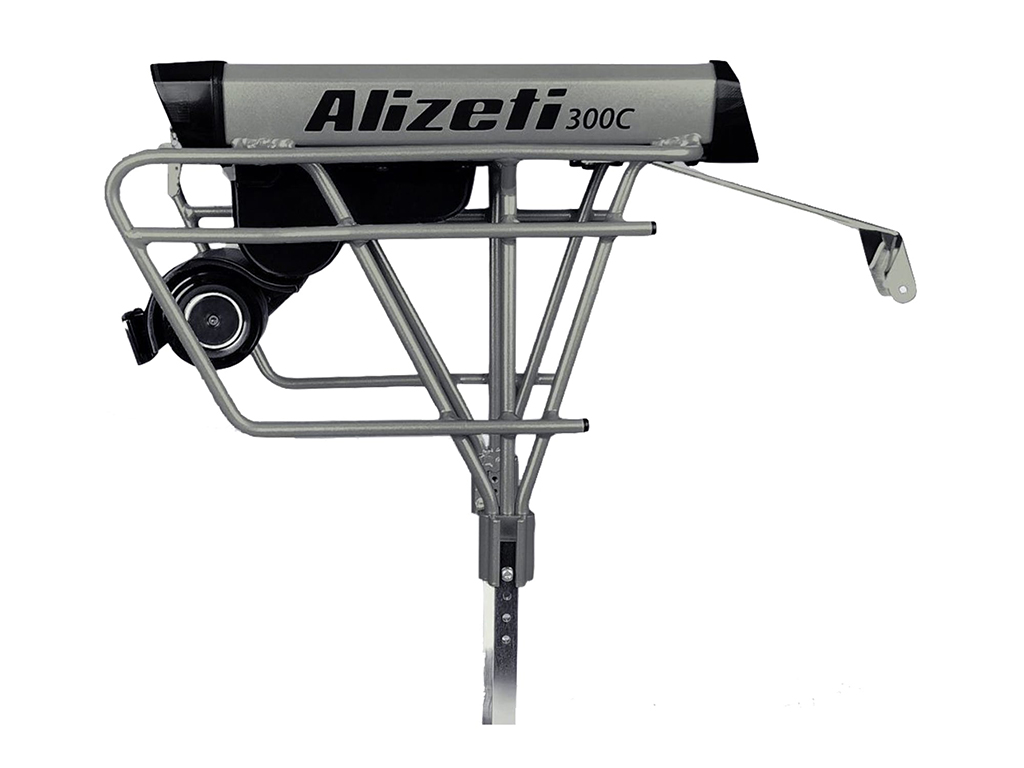
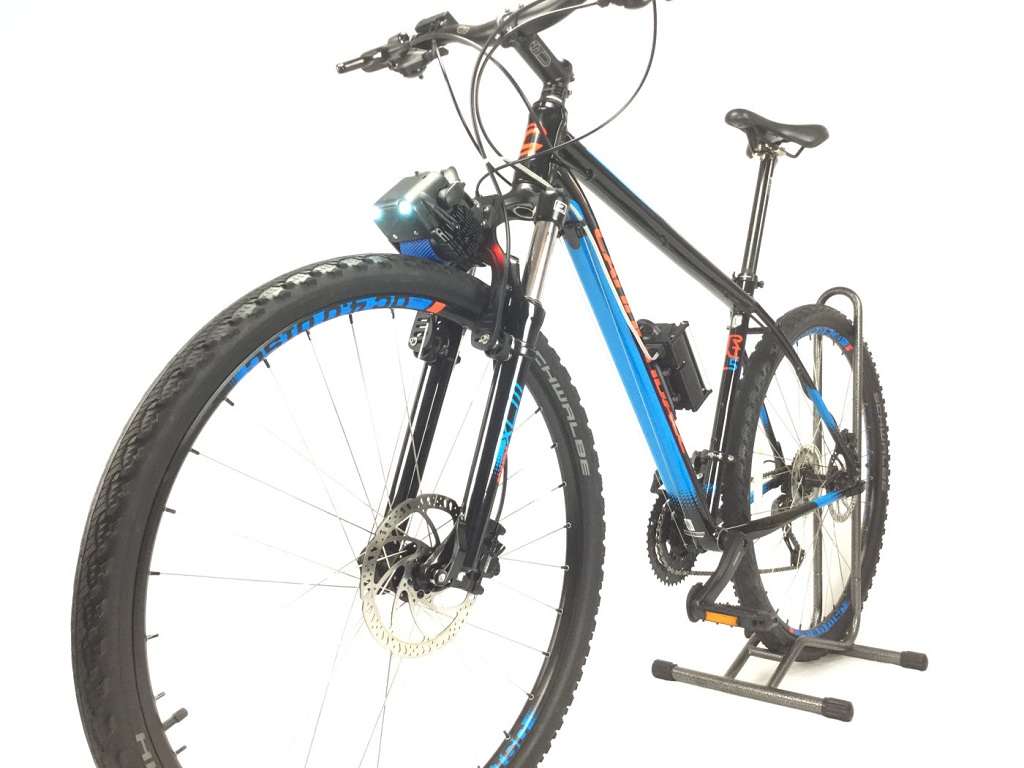
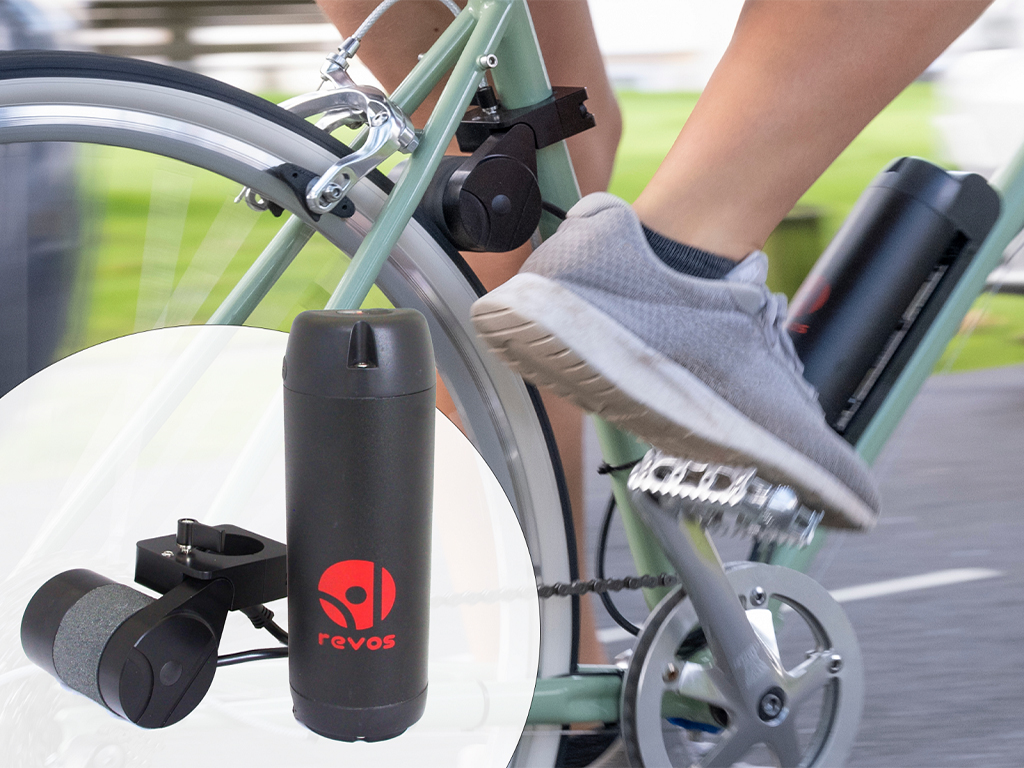
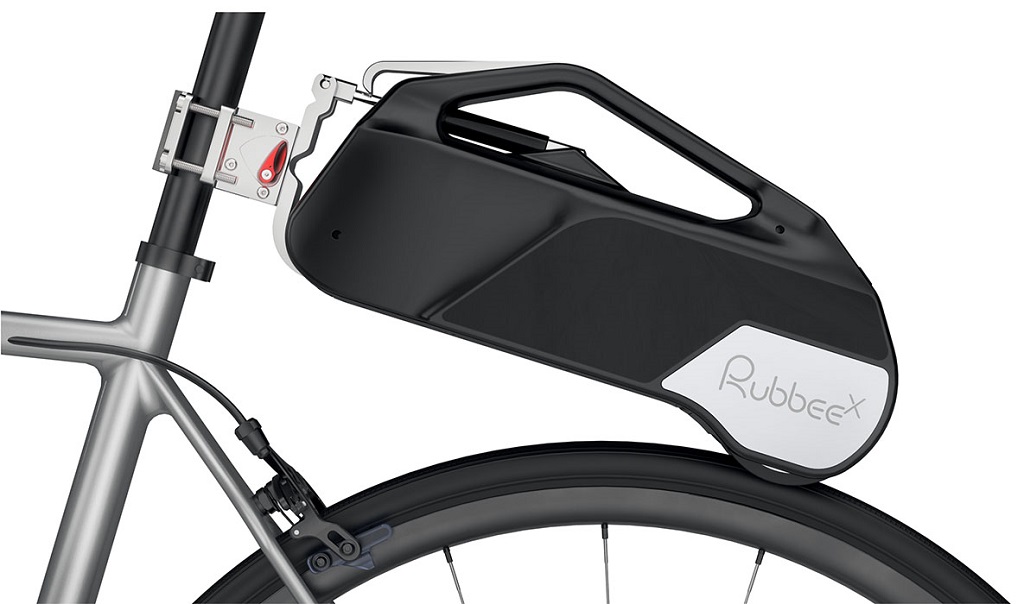
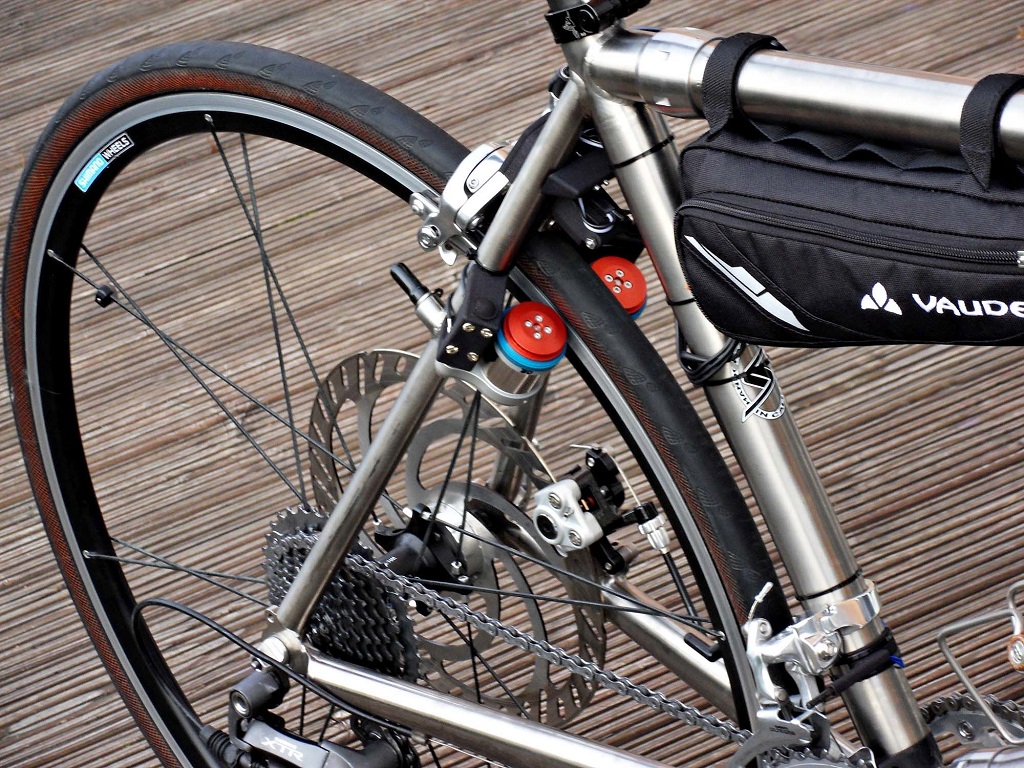
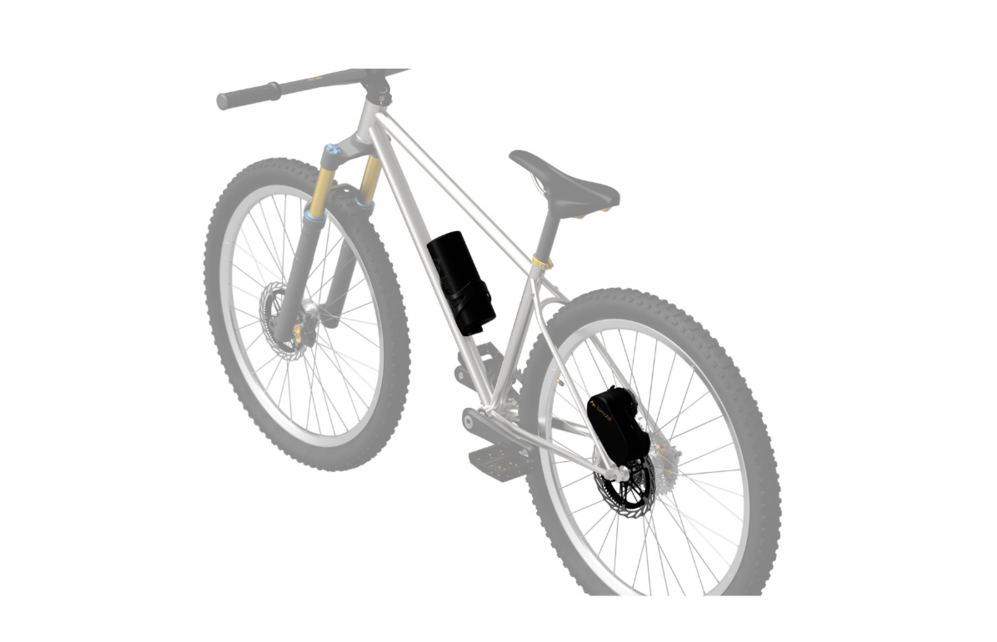



Sure nice to see Bion X given the mention. As i have been partial to the system using and selling it for the last 6 years
Yes the Bionx kit is a nice system. I will be posting a review on it soon.
Sure nice to see Bion X given the mention. As i have been partial to the system using and selling it for the last 6 years
Excelent guide my friend, i helped me to decide what i will build !!!
Thanks Pavlos, I’m glad it is helpful!
Can we expect reviews on the rest of these kits? Can you also make a note as to which kits are available for retrofit and which are only usable as original equipment only. Like all of the mid drive kits are pretty much OE only, and the stoke monkey is designed exclusively for the extra cycle/big dummy. If you want to put it on something else, there is no support. Maybe an article on the pros and cons of front vs rear hub drive. That’s all I got.
Electric motor bike is really very
innovative one.. these motorbikes stands for fuel efficiency which
comes with reduction of air and sound pollution. Electric motor bike
are true example of Eco friendly bikes.
Everyone is moving to electric motorbike and cars …one can say people are becoming environment conscious!!
Indeed, people are quite aware of environment and causious of their planet.
good luck when you need to order parts they refuse to order over phone then when you order over the net they send you an email 4 days latter that they want pics of item you call them and describe in detail they refuse order good luck staying in business stay away phone support is horrible
I love my AmpedBike conversion kit! I am a larger lady and use it for commuting and exercise. I did 17.65 miles today. I love the fact that I do not have to worry about wearing myself out or how I am going to get back if I go a long distance. Not to mention that it is good for the environment. A great way to to exercise and lose weight!
I have mixed feelings about ampedbikes. Mainly, because their website states the mini geared motor (stealthy kit) can reach a max speed of 20-22 mph, but that information is outdated and even if they alter the components in their ebike kits their unlikely to update their website to reflect their current specifications.
For instance, their newer mini geared motors can only reach a max speed of 16-19 mph with pedaling, but that information isn’t stated anywher on their website.
You’ll just have to learn your lesson the hard way. If you don’t like the changes in their kit, the only thing that they’ll tell you is that “you can return the kit with a 15% restocking fee plus the cost of shipping.”
I have a new geared kit and hit 20 miles per hour without even pedaling and have never had any issues with my kit whatsoever. My bike is awesome! Maybe you have the speed limitor plugged in or something.
That is my AmpedBikes Geared Kit btw – I forgot to clarify
Thanks for all the great information, BionX is one of our favorite kits as well. A conversion kit compatible with such a wide range of bikes creates a lot of possibilities, and it’s fun to see all the creative conversions people come up with: https://bionxbikemotor.com/blog/2013/10/16/creative-bionx-conversions/ Thanks again for the blog, will share, quid pro quo best – Jack
I’m looking to ‘electify’ a Single Speed Fat Bike. The rims are 26 x 50mm. What would be the best system to power it? I like the idea of a system that can be swapped in/out without too much difficulty, so I can resume ordinary cycling, and I’d like lots of power. Happy to build a separate wheel if necessary, but cost needs to be within reason.
I’m trying to find info about the
Currie electro drive motor. I have an older one that I can’t get going.
It drives the back wheel with sprocket and chain,24 volt, any info about this would be appreciated as I’m trying to restore this old relic. Thanks
Hi Cameron
I used to run one of these but sold it many years ago and assumed they had gone out of business – but they spares still appear to be availalbe
https://electricscooterparts.com/currieelectrodriveelectricbicyclekitparts.html
I recall them as being very powerful kits for the time but they had a habit of breaking spokes as that is how they powered the rear wheel
Richard, EBR writer
i bought a refurbished Electron wheel on e-bay. the cost i think was $299.00 incl. shipping. i ride this wheel every day and it has been great. 20 mph pedal assist, no wires 10 min. instal. i would buy 10 more if i could but they went out of business. i can’t say i have not had some troubles though. for example the battery’s on this all included hub broke off the brackets and i had to open the cheap plastic housing and fix myself. i don’t think it is waterproof either which sucks but for the price i love this wheel. another con is the weight , its heavy. reviews were bad for this product so if anyone wants to sell theirs let me know.